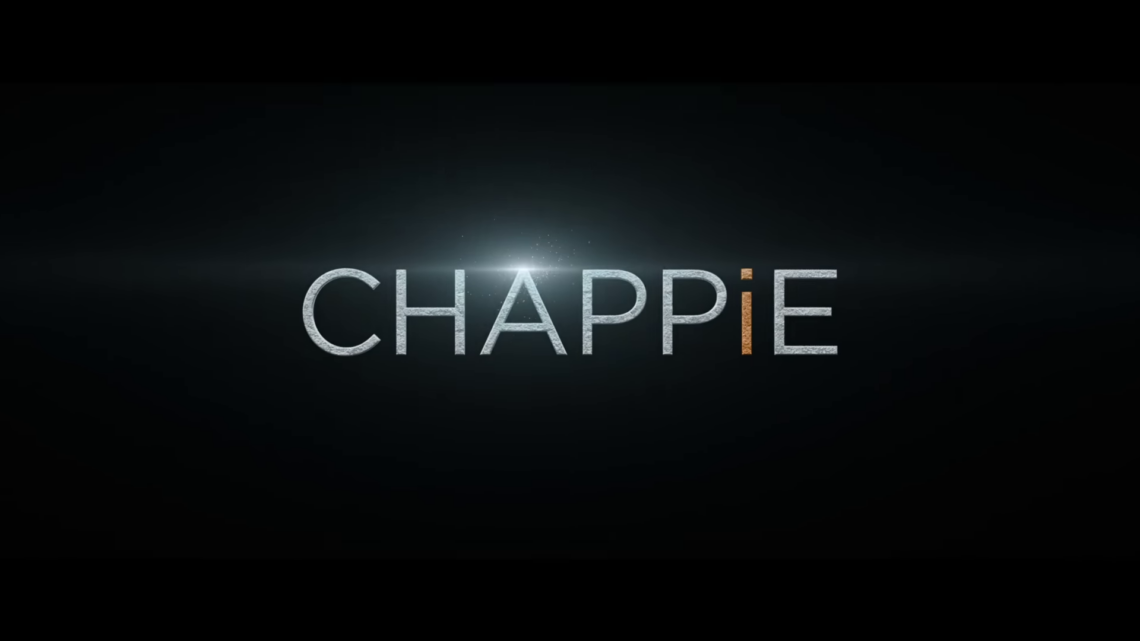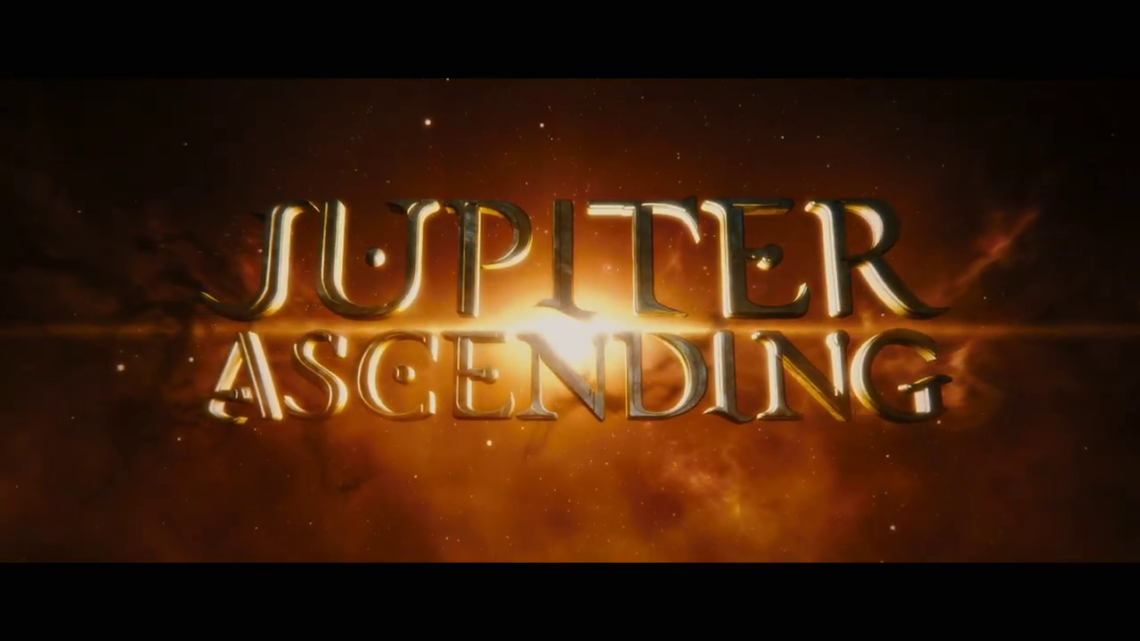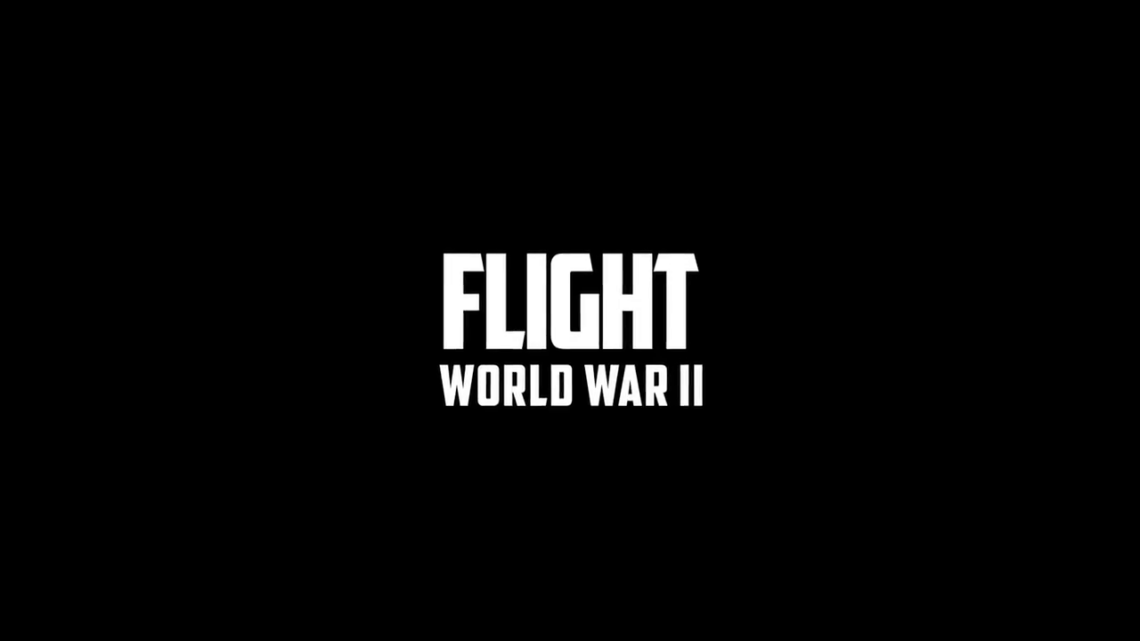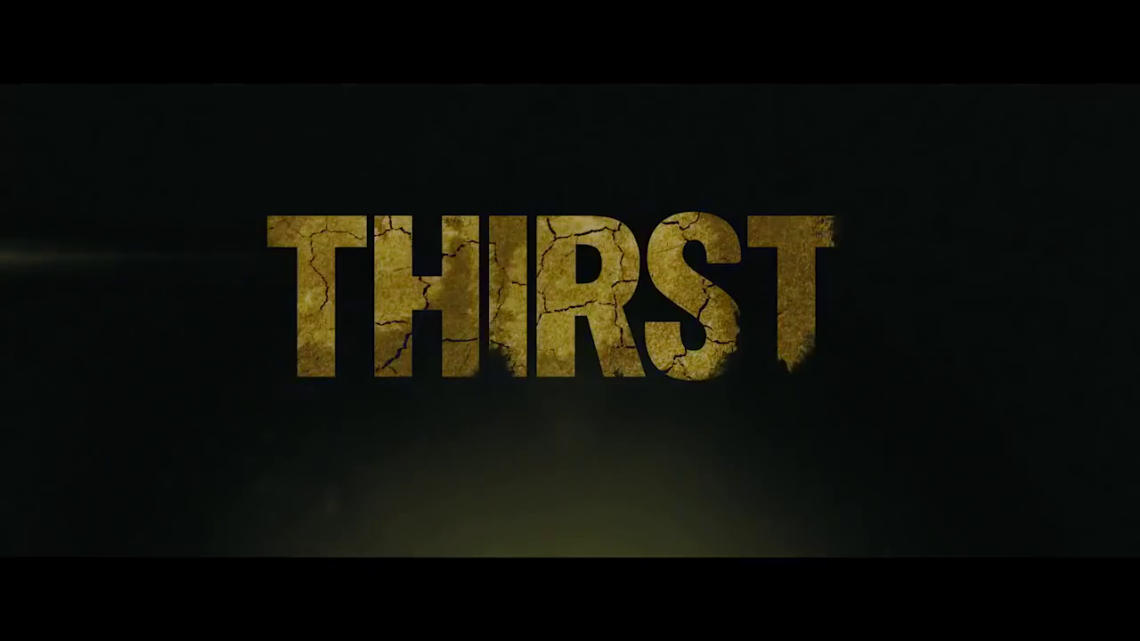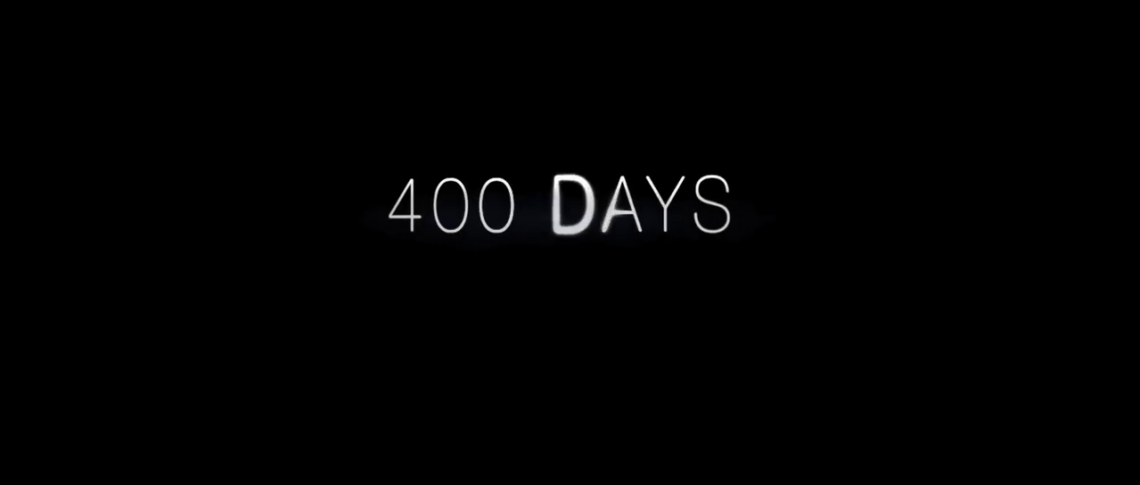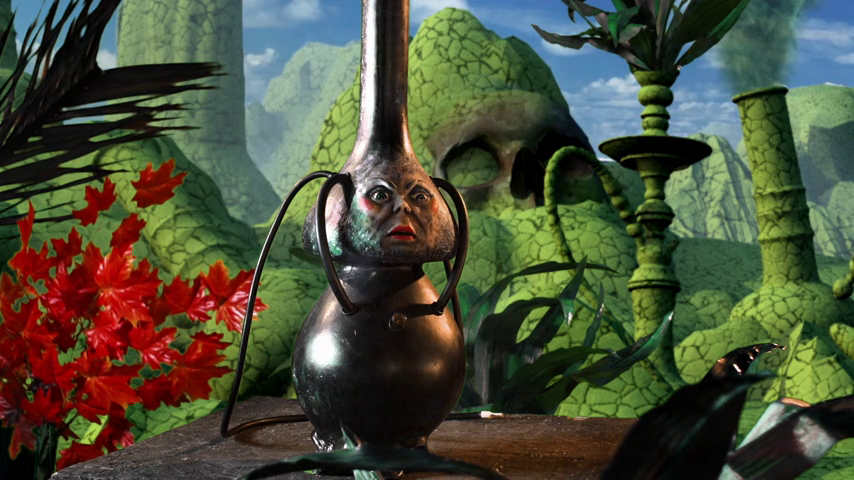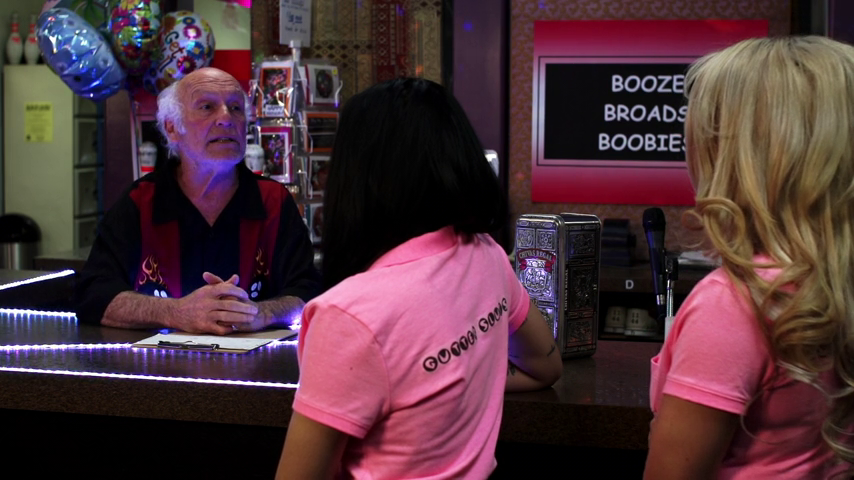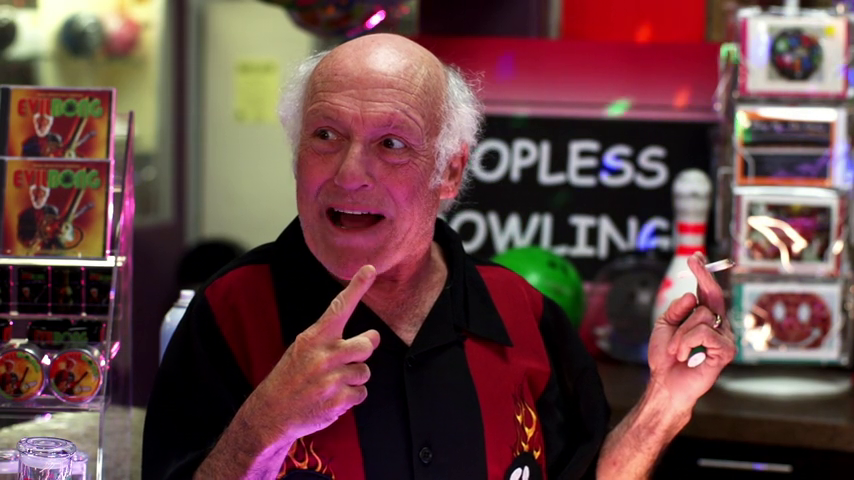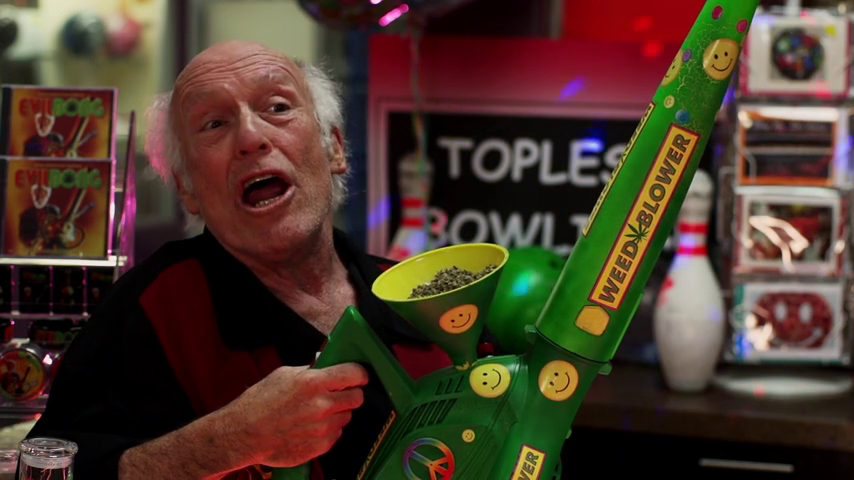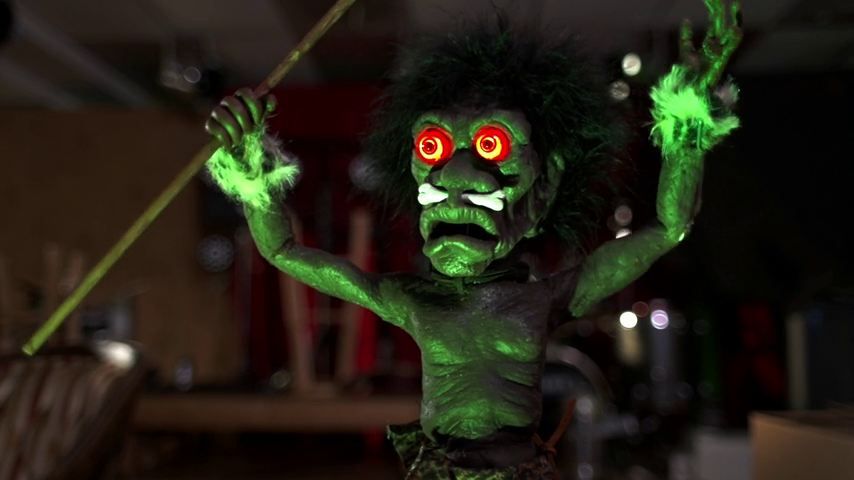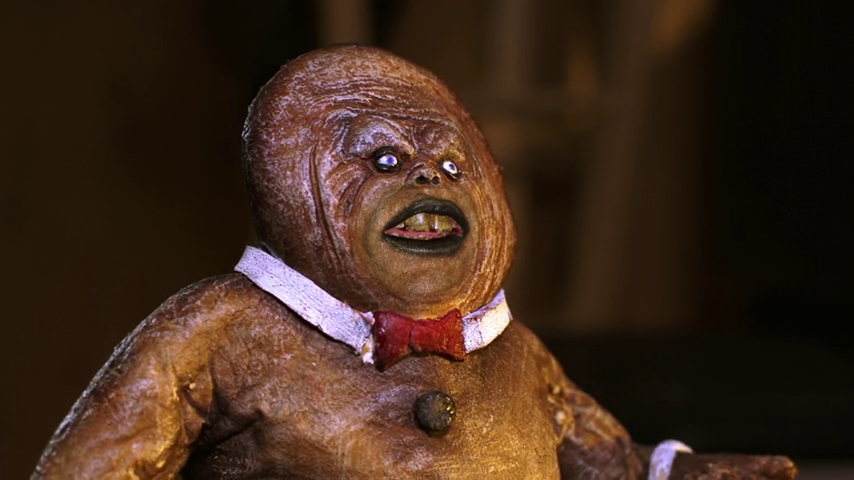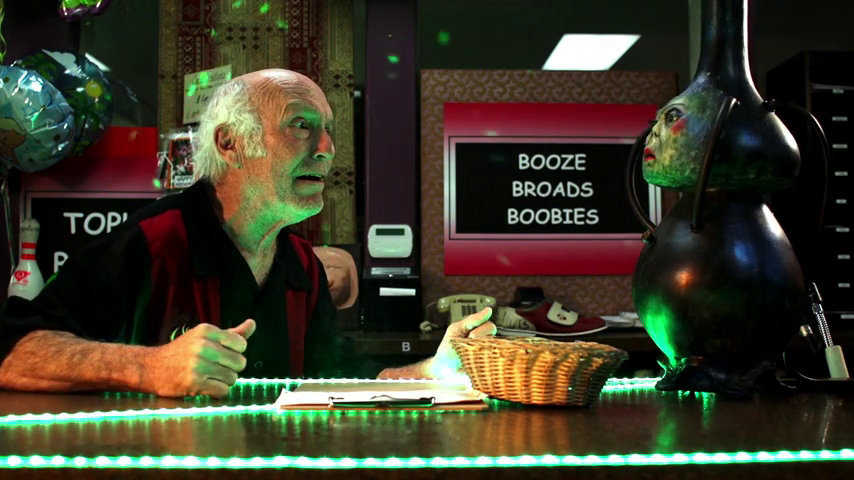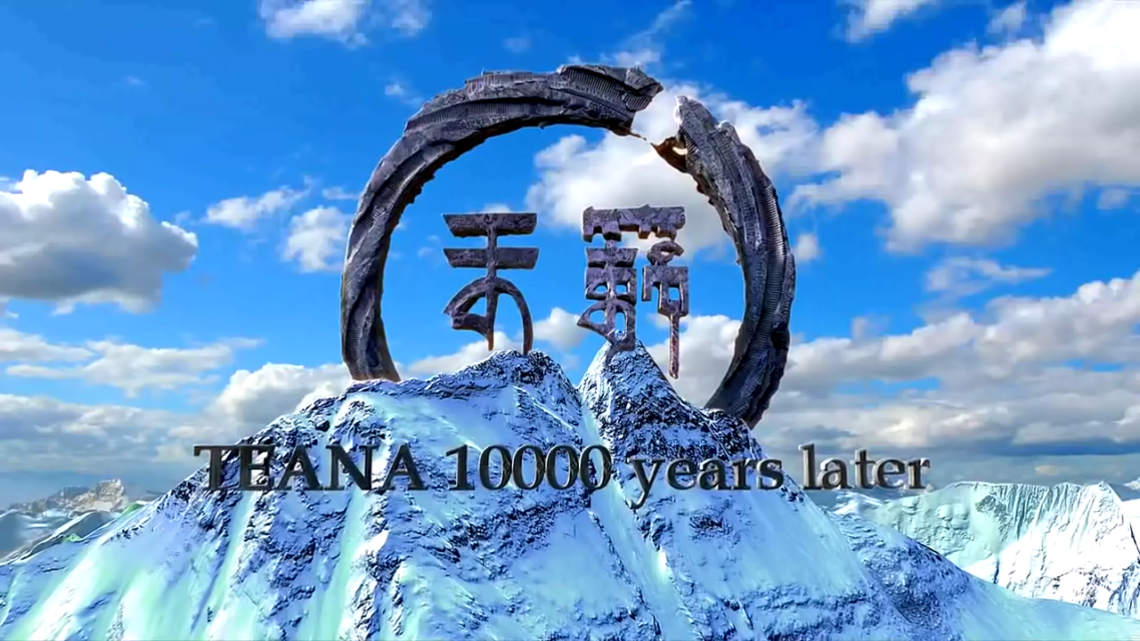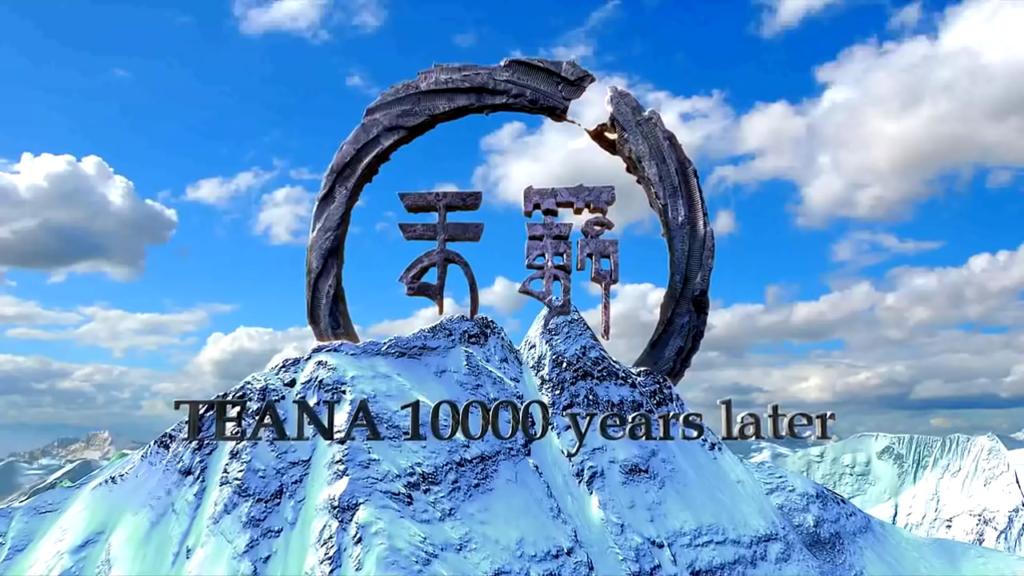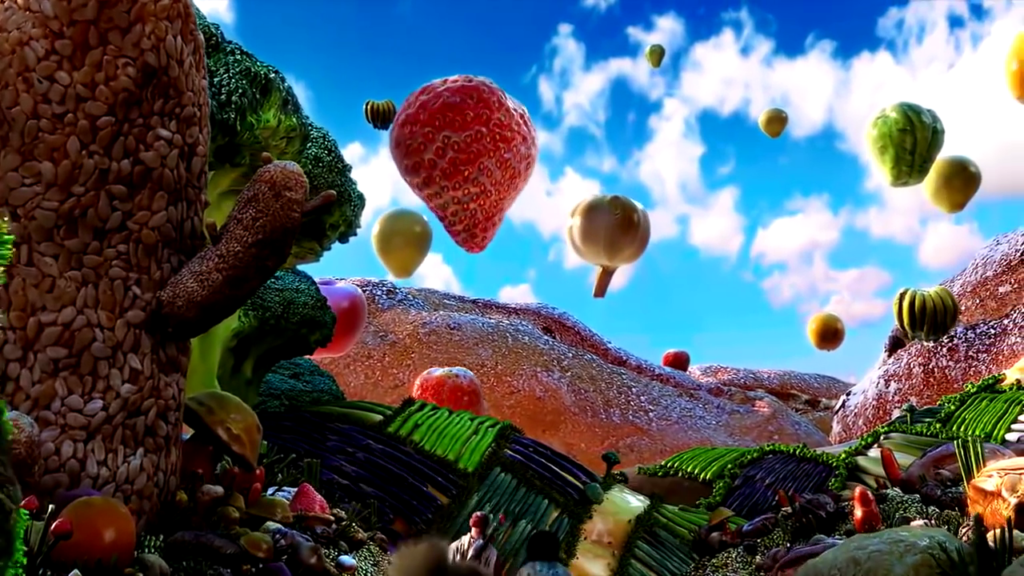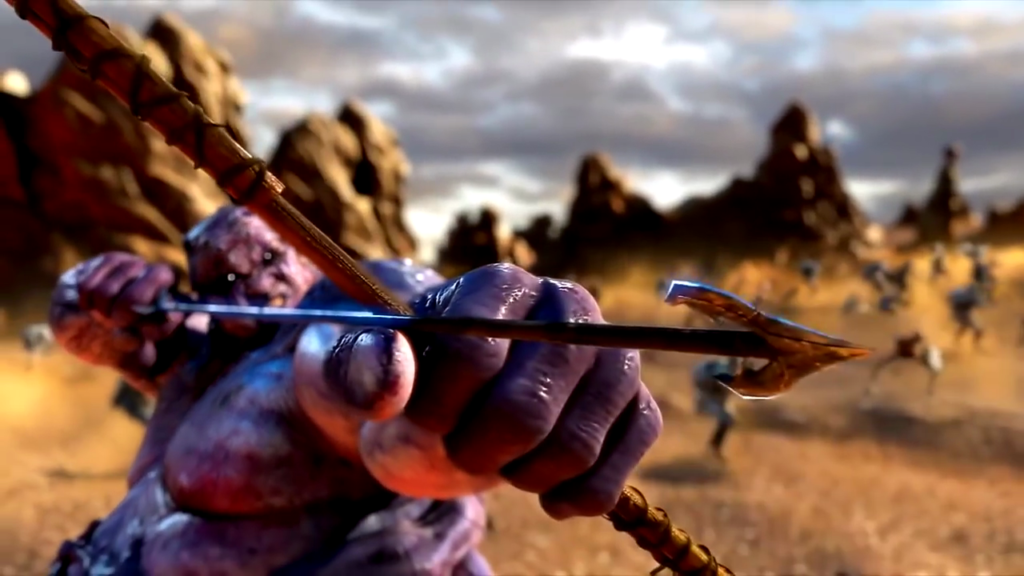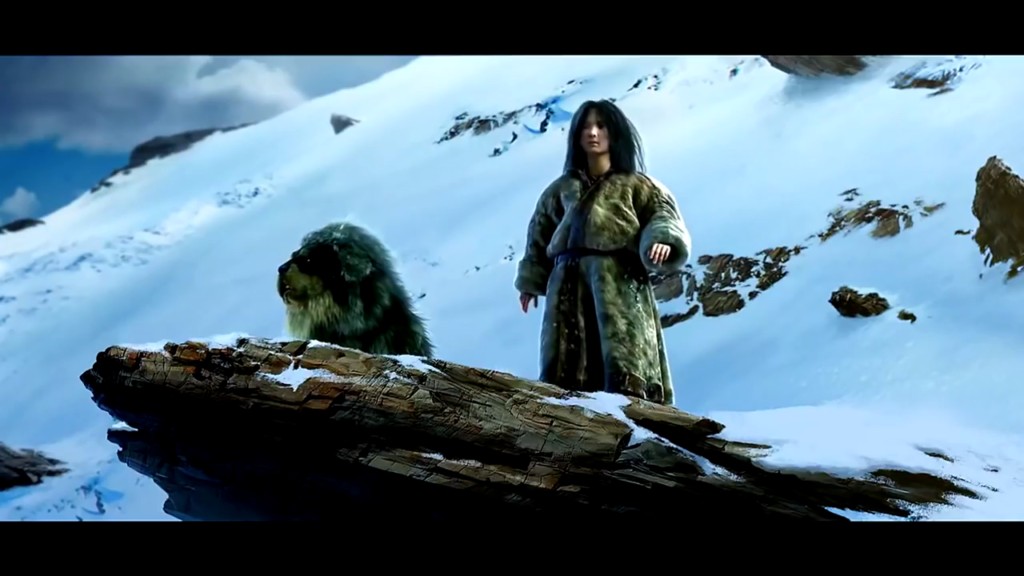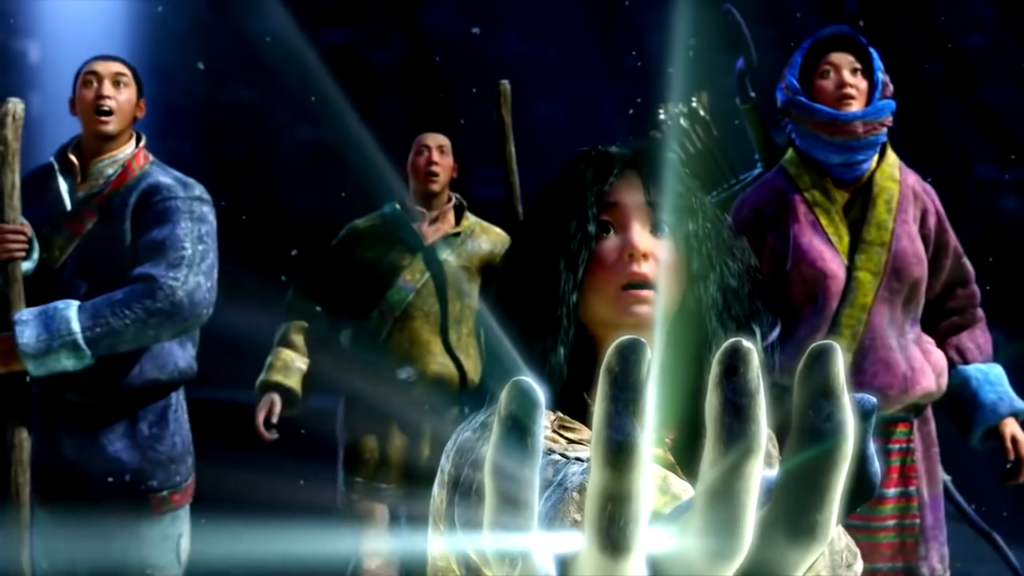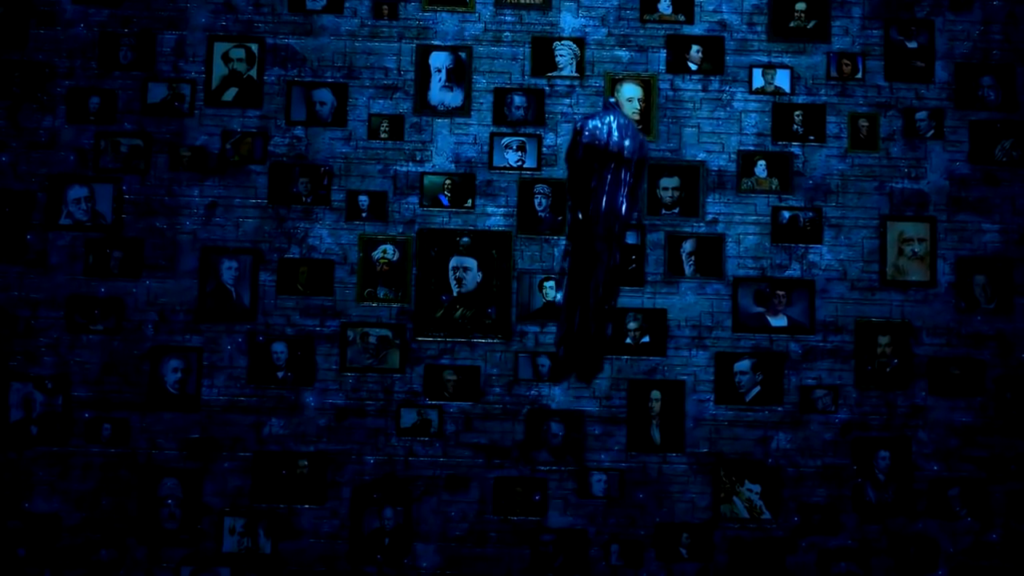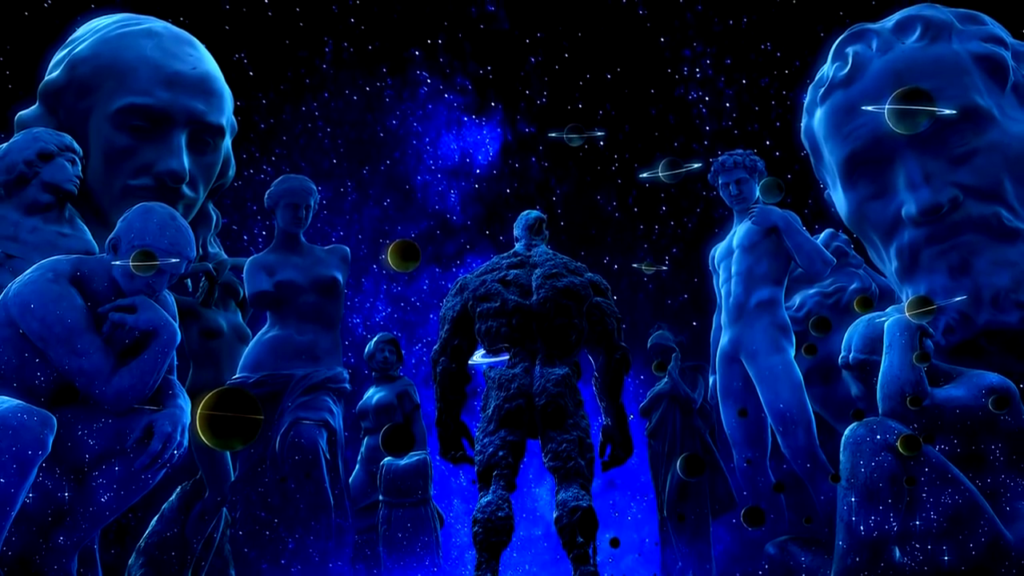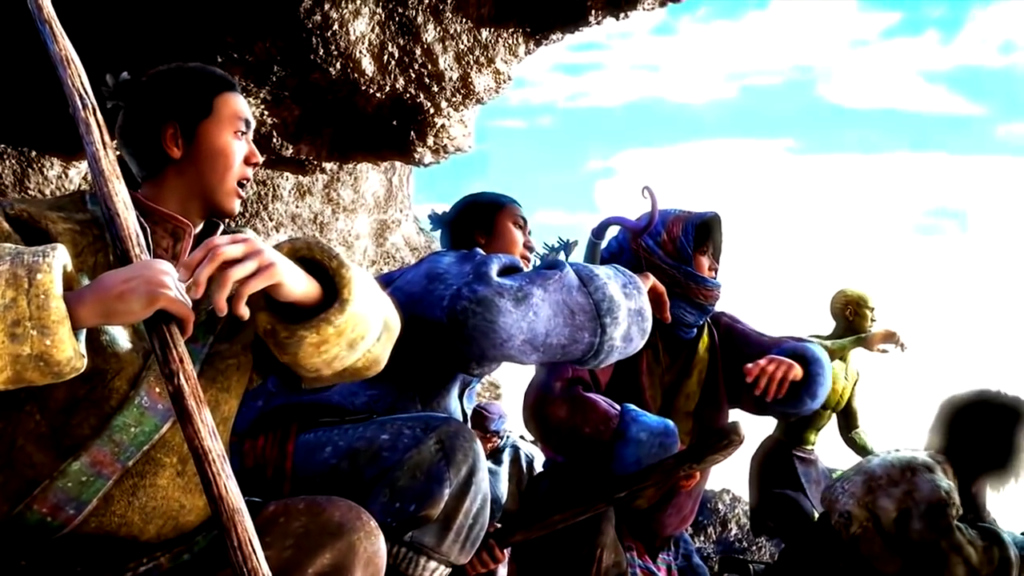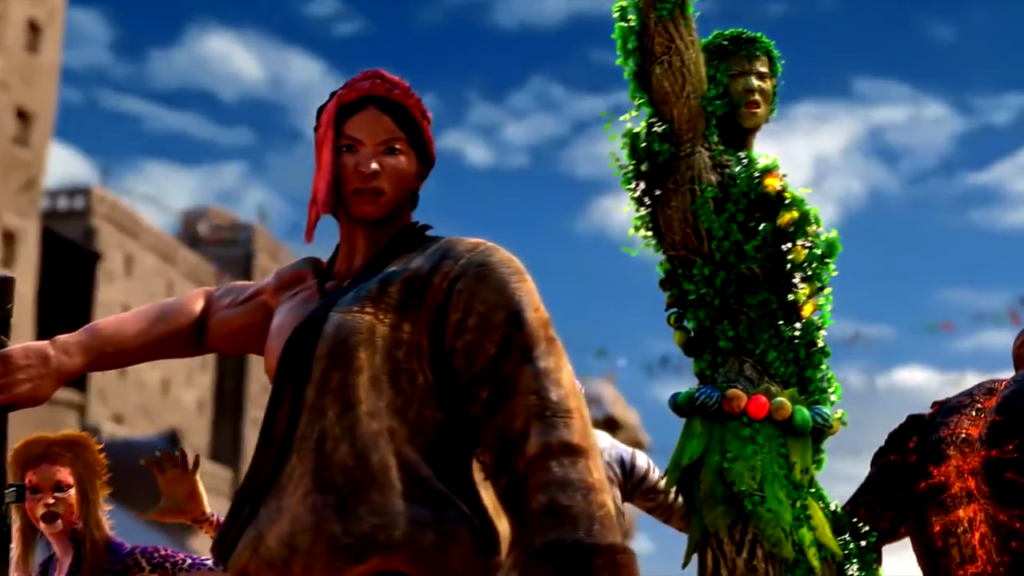-
#682 – Chappie (2015)
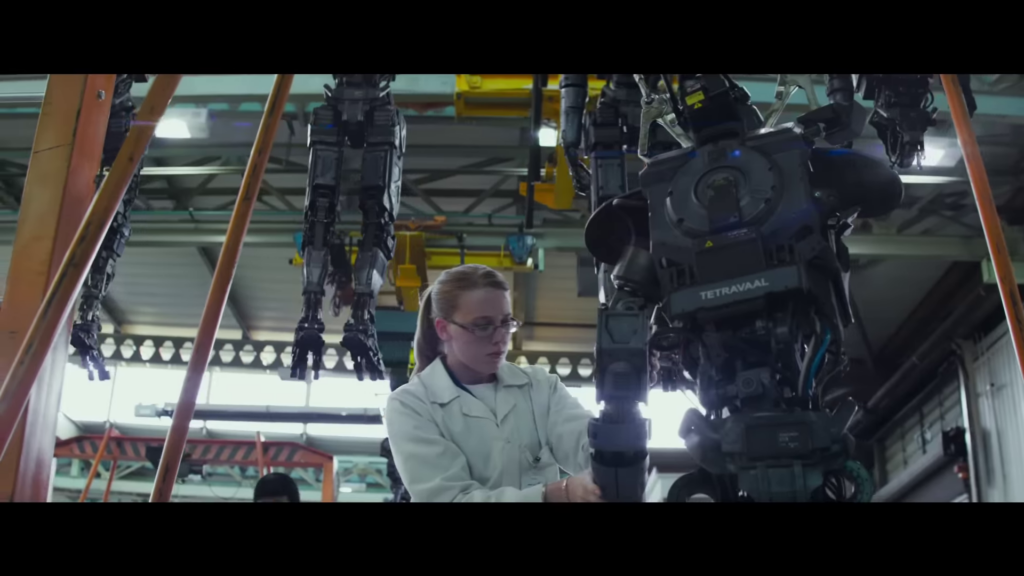
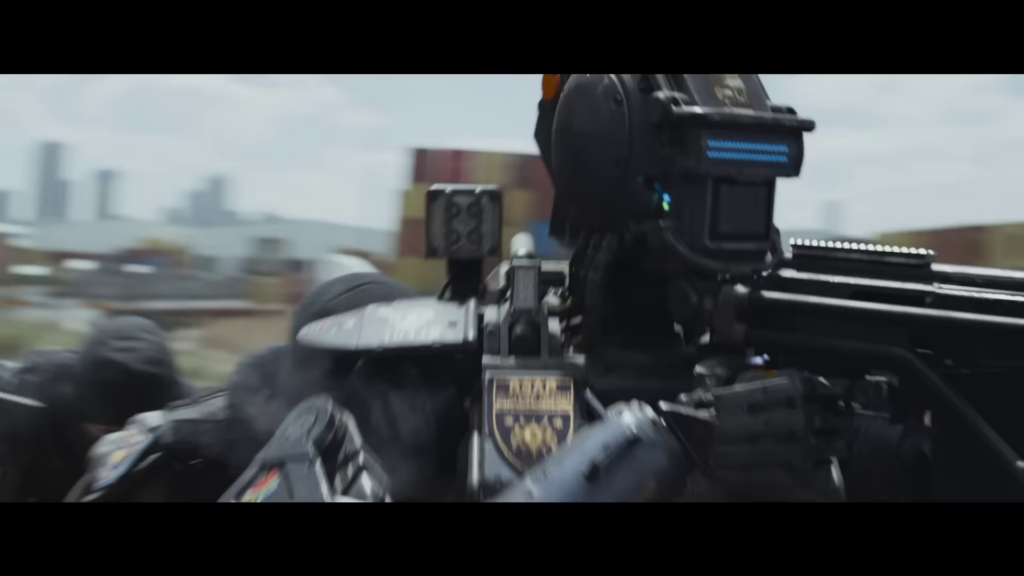
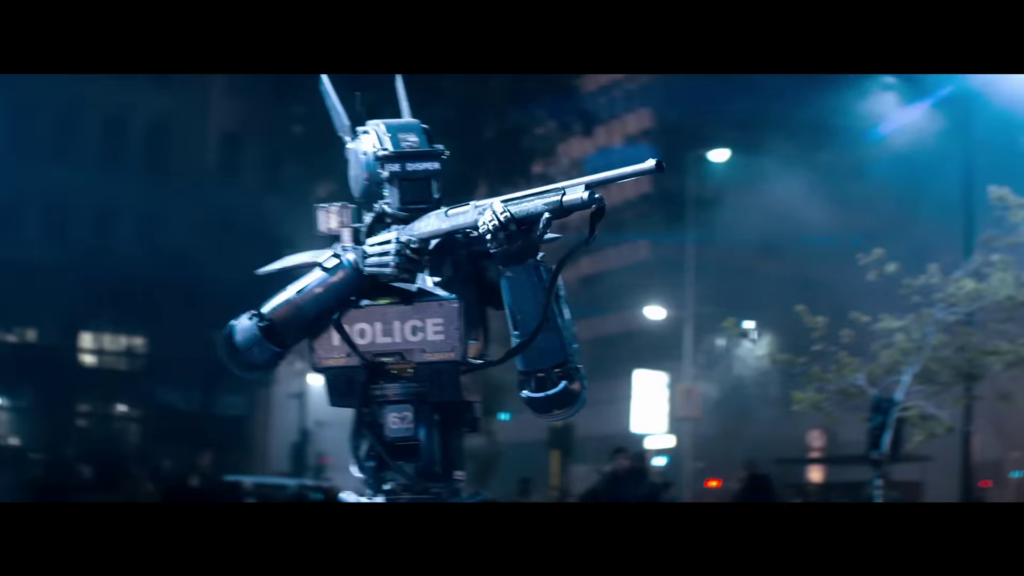

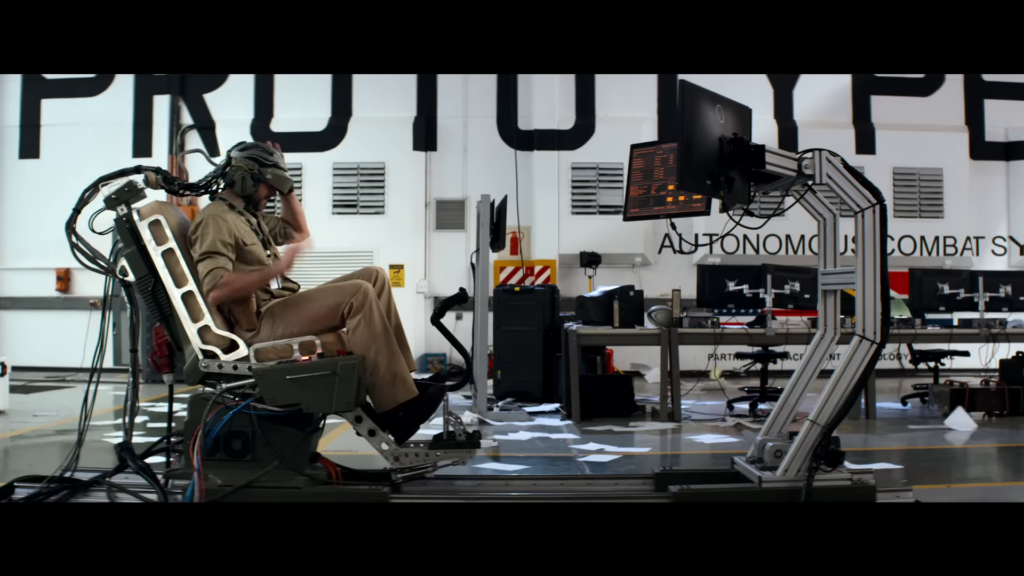
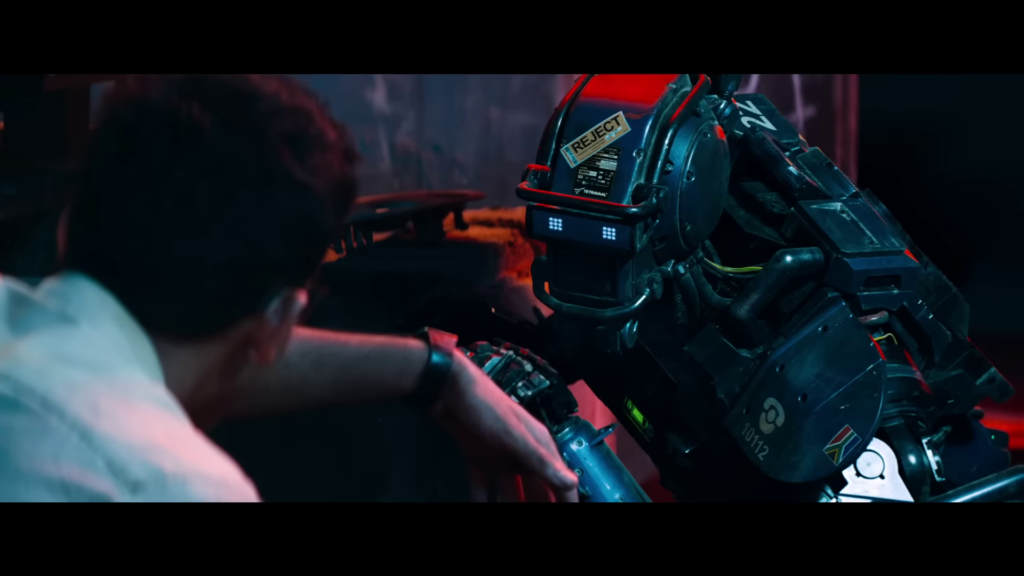
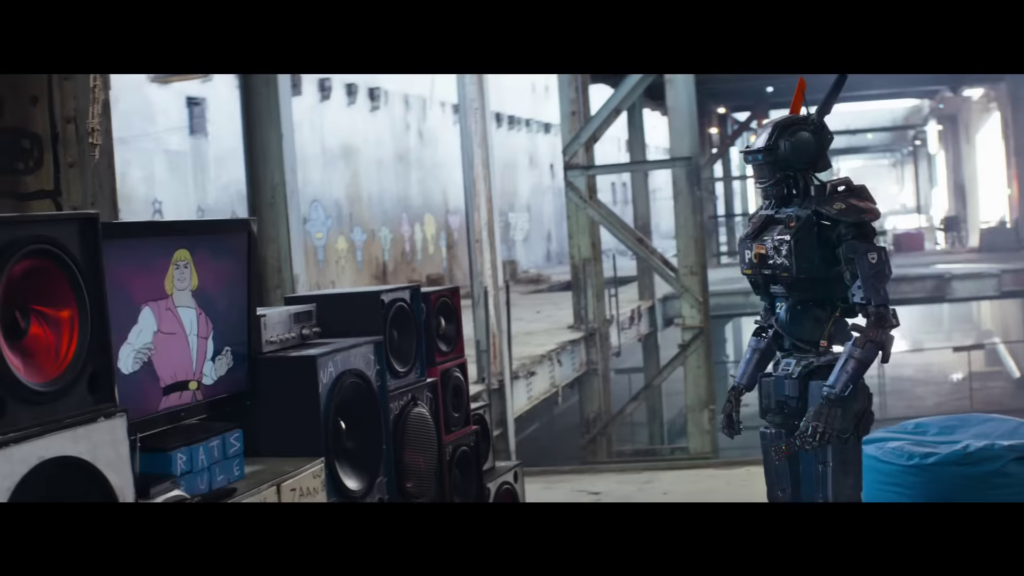
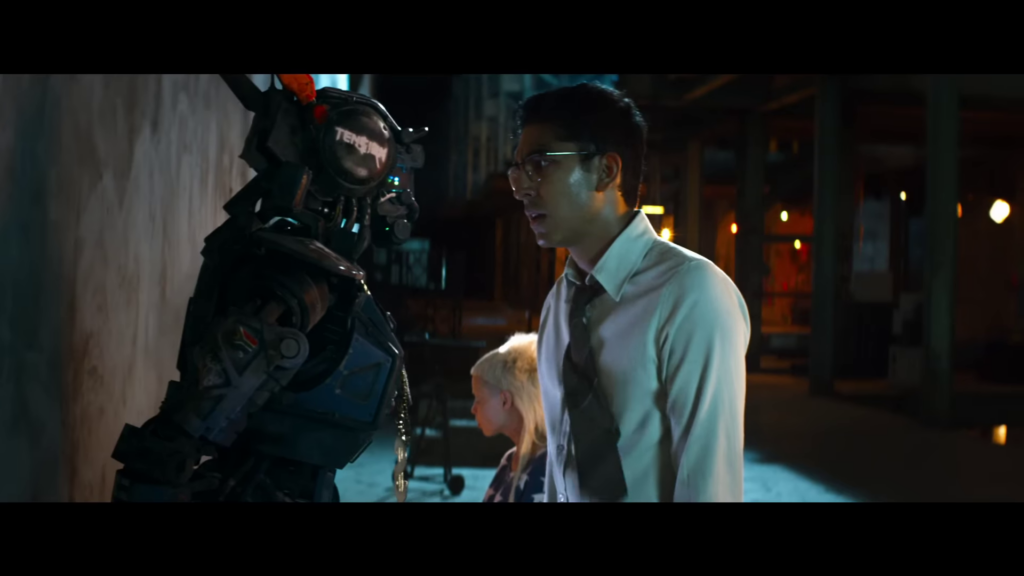
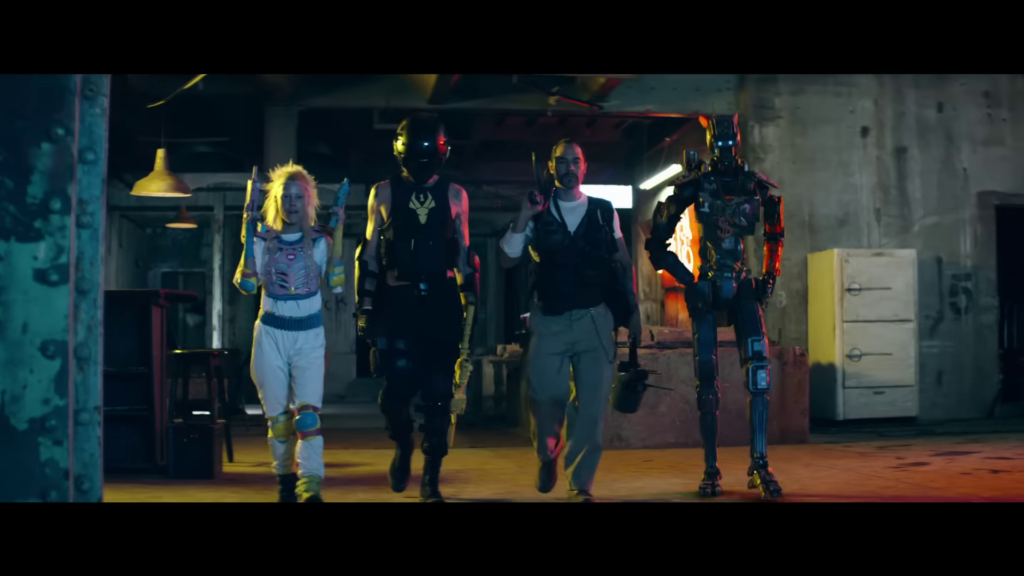
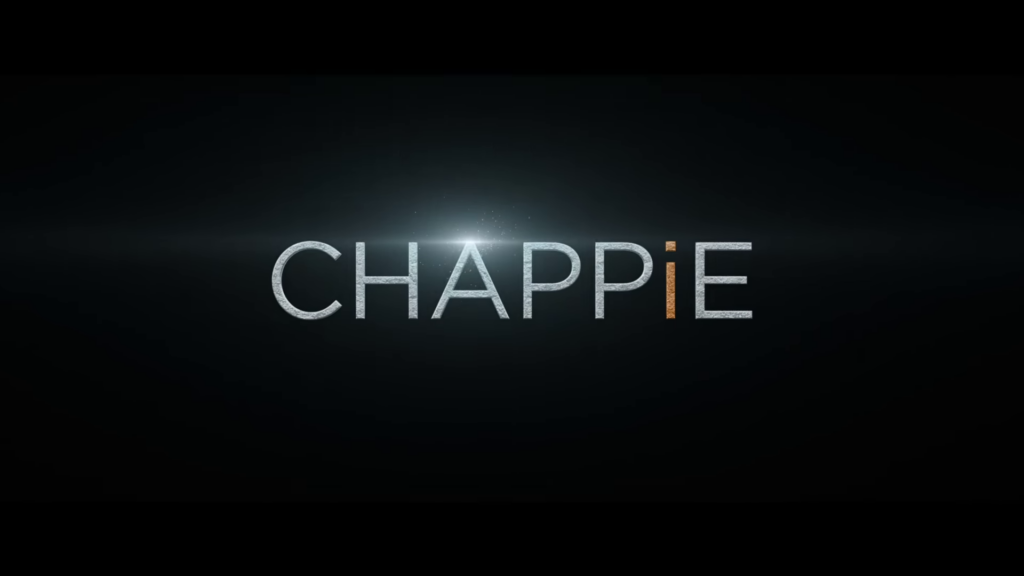
Chappie (2015)
Film review #682
Director: Neill Blomkamp
SYNOPSIS: The developer of a mass-produced robotic police force has been secretly developing a full conscious artificial intelligence. He tests it out on a robot due for destruction, but is kidnapped along with his test subject by a small-time gang who want to use the robot themselves to rob money they owe to a bigger gang. Thus Chappie has to learn to grow up influenced by both his creator and gang members who want him to use him as a tool for crime…
THOUGHTS/ANALYSIS: Chappie is a 2015 sci-fi film directed by Neill Blomkamp. being a Blomkamp film, it should come as no surprise that it is set in the near-future in Johannesburg, where crime is rife. Robotic police officers produced by the company Tetravaal help maintain order, but the creator of the robots, Deon Wilson, is interested in other things: creating an artificial intelligence with a consciousness. While testing it on a defunct robot though, he is kidnapped along with the robot by a small-time gang who want to use it to carry out a heist and pay a much larger gang. The plot of the story touches on familiar ideas around A.I., things which you’ve probably seen before in films such as Short Circuit and RoboCop, although given the typical Blomkamp cinematic edge which adds in an element of loudness and chaos. While the story touches on the points you would expect it to, it doesn’t really provide any depth or originality and the film slides away from attempting to give any answers to the questions it raises as it goes on. Chappie himself is probably the highlight of the film: he is animated and spirited, and the CG is well done to give him life, but again he doesn’t really find any of the answers he is looking for as the film pivots away from dealing with the difficult questions.
There is a lot going on in this film: between the different people wanting to use Chappie alongside the robot himself, there’s little focus and everything is spread a little thin. Hugh Jackman’s character Vincent provides a antagonist role that doesn’t seem necessary, as he tries to get funding for his bipedal mech in place of Deon’s robots. The finale essentially just pivots to a direct confrontation between the mech and Chappie, and puts everything else set up throughout the film to the side. Even the events after it don’t connect to the film’s themes, and a bunch of new elements to consider don’t get any development before the film abruptly ends. The trailer of the film has an almost exclusive focus on setting up Vincent as the antagonist against Chappie, and really portrays the film as almost entirely action-based, which is wholly misleading; perhaps marketing didn’t think that a film about A.I. would be as interesting: but truthfully, it is more interesting than another film about CG robots fighting each other which the trailer suggests.
Chappie as a film has a very fragmented story that is tenuously held together by it’s robotic lead. The film sets up questions surrounding artificial intelligence but never provides a satisfying resolution, choosing to throw more plot elements in at the end instead and not really deal with them. The whole villain arc is again a big distraction that doesn’t really serve the film’s purpose to any degree. That said, it’s a technically competent film with good effects, and if you’re a Blomkamp fan, then you’ll appreciate him doing what he is known for; it’s just that his unique style doesn’t really allow a more interesting spin on the themes that are the backbone of so many other films.
-
#651 – Jupiter Ascending (2015)
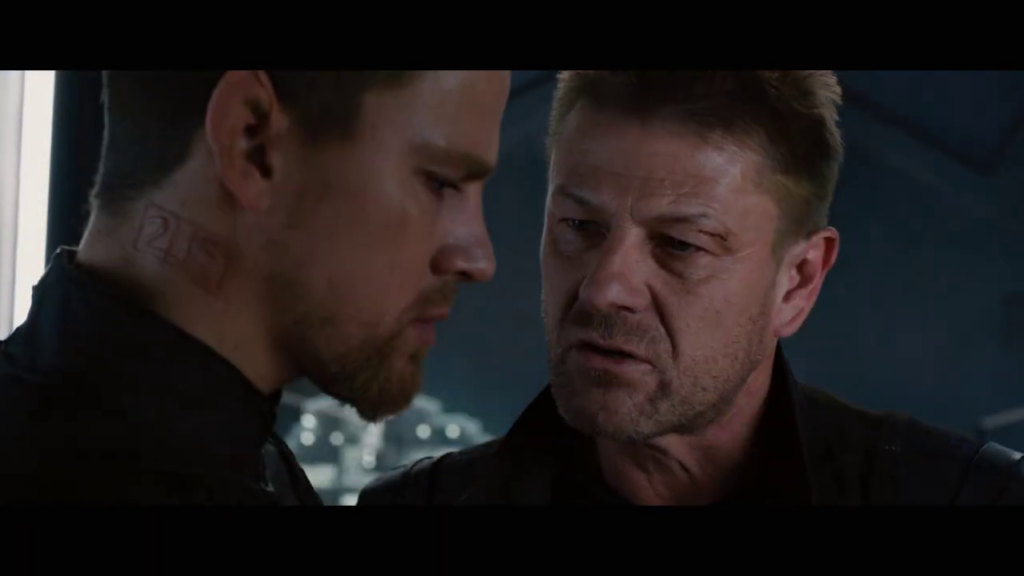
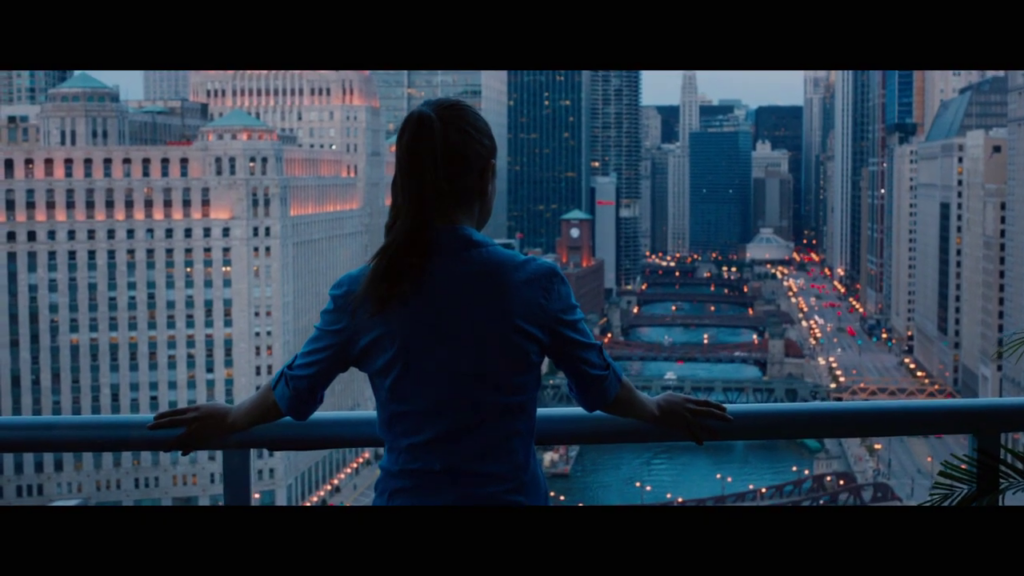
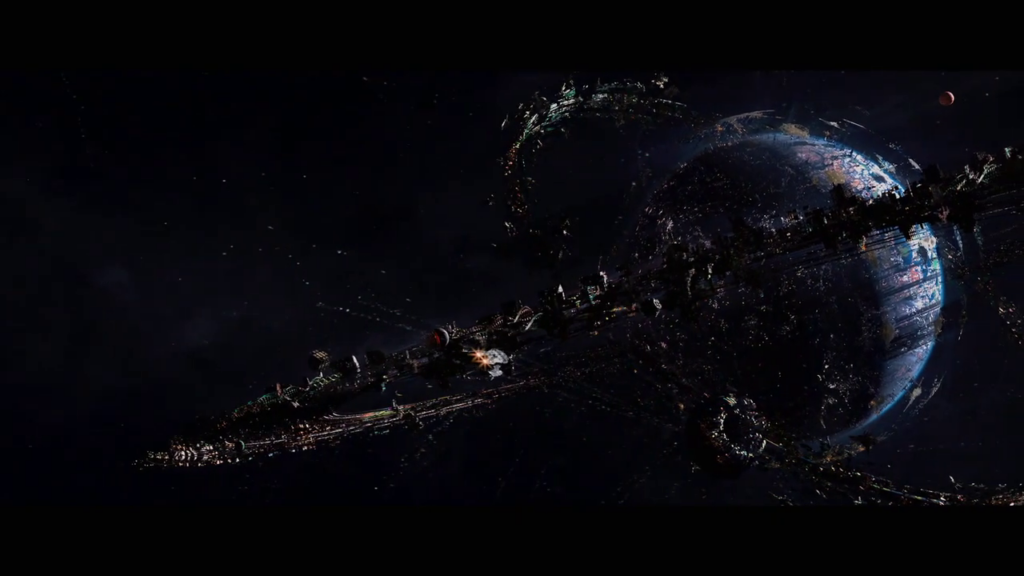
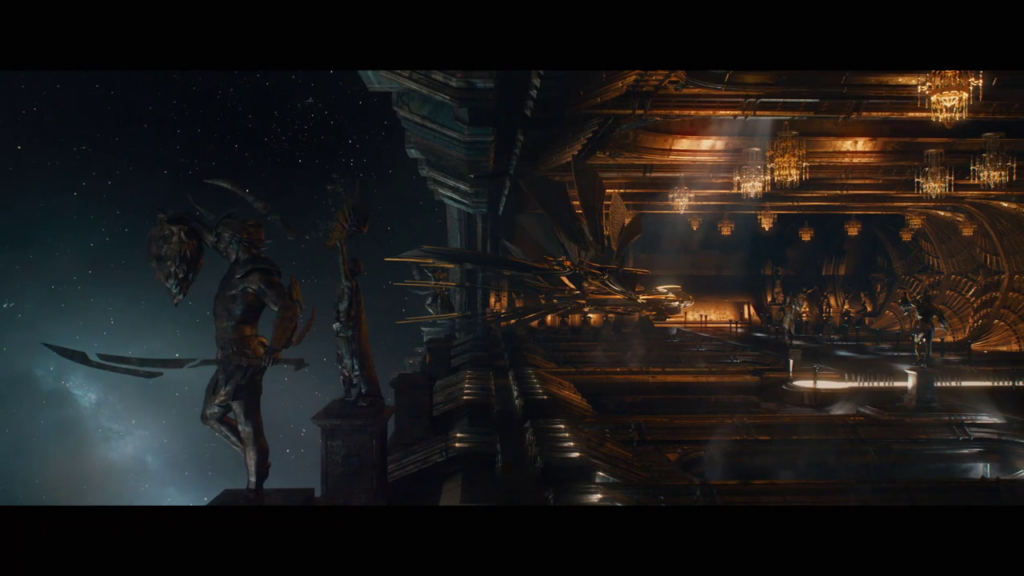
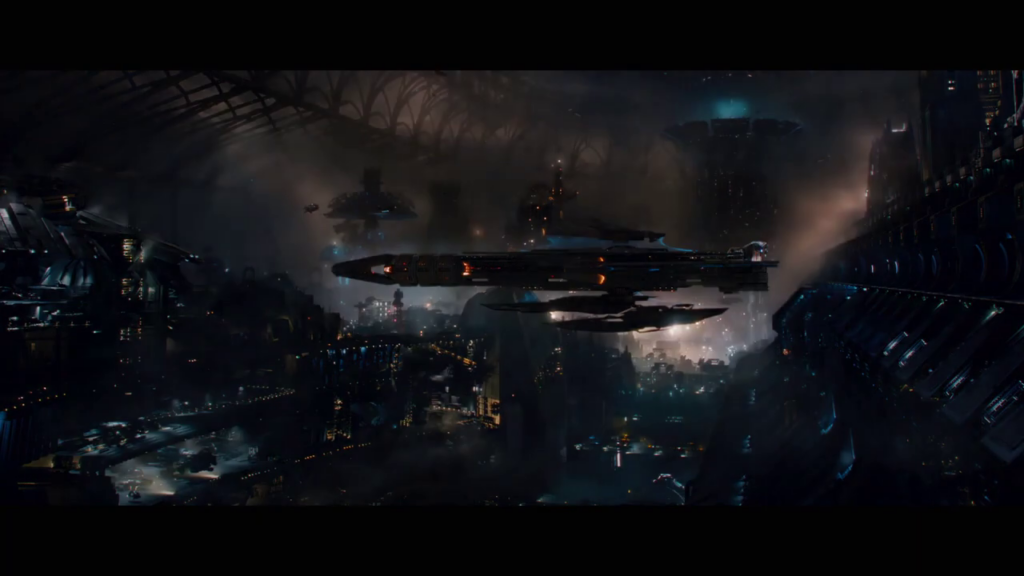
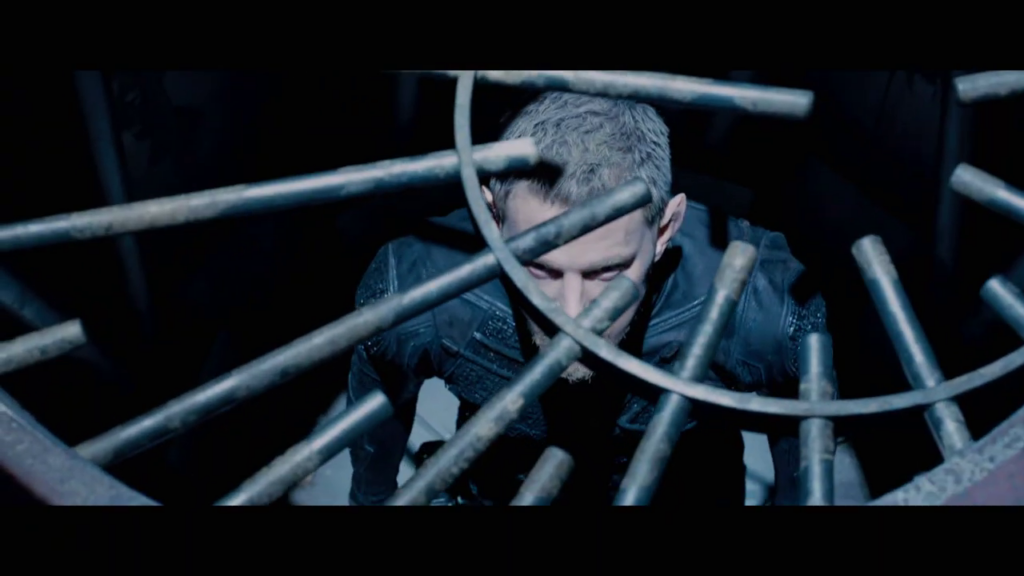
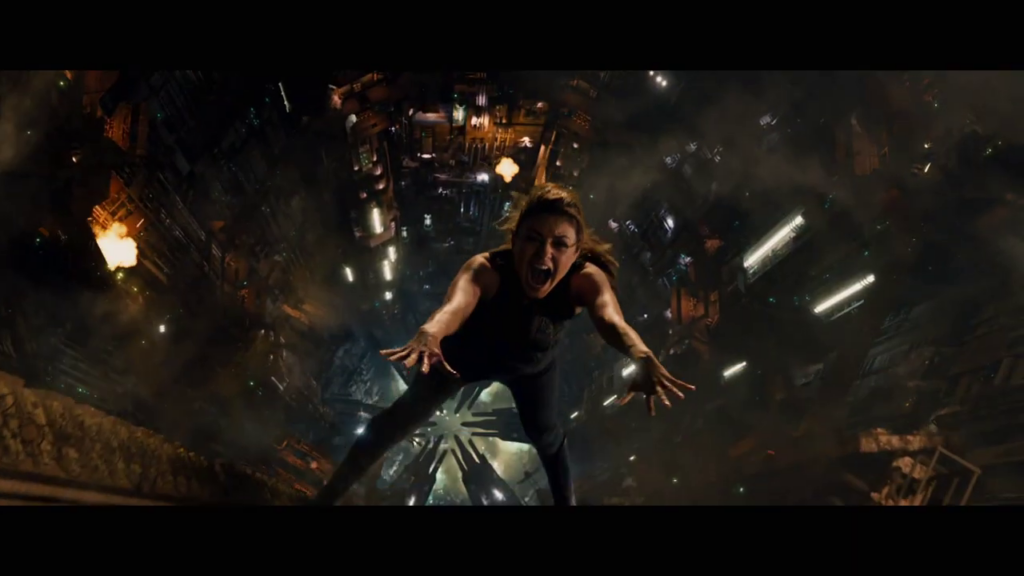
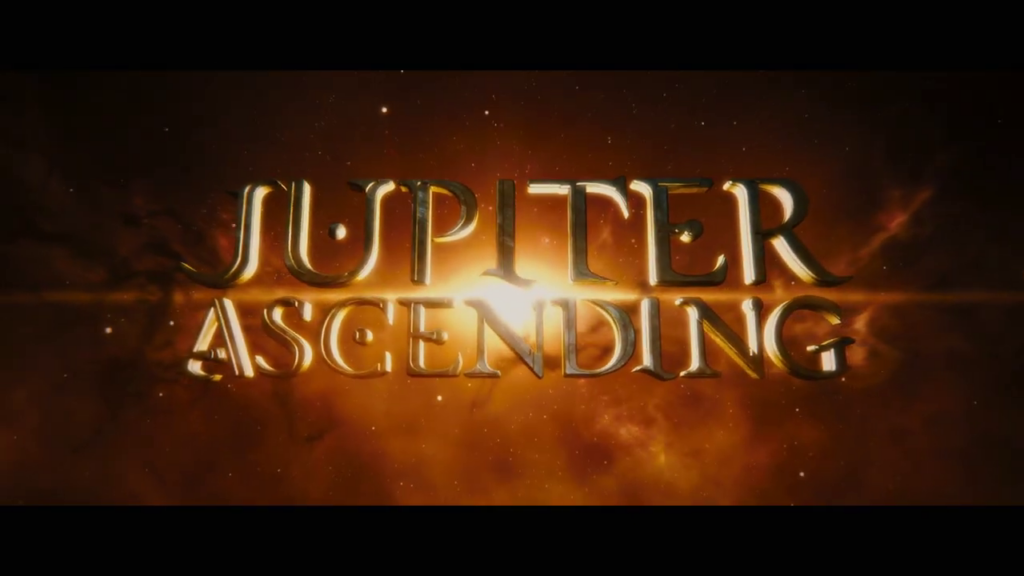
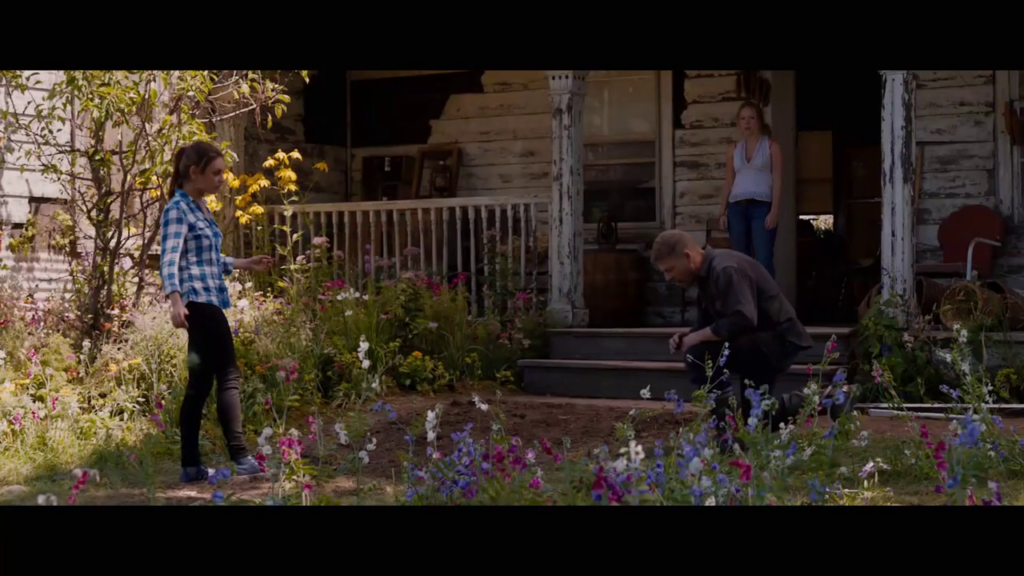
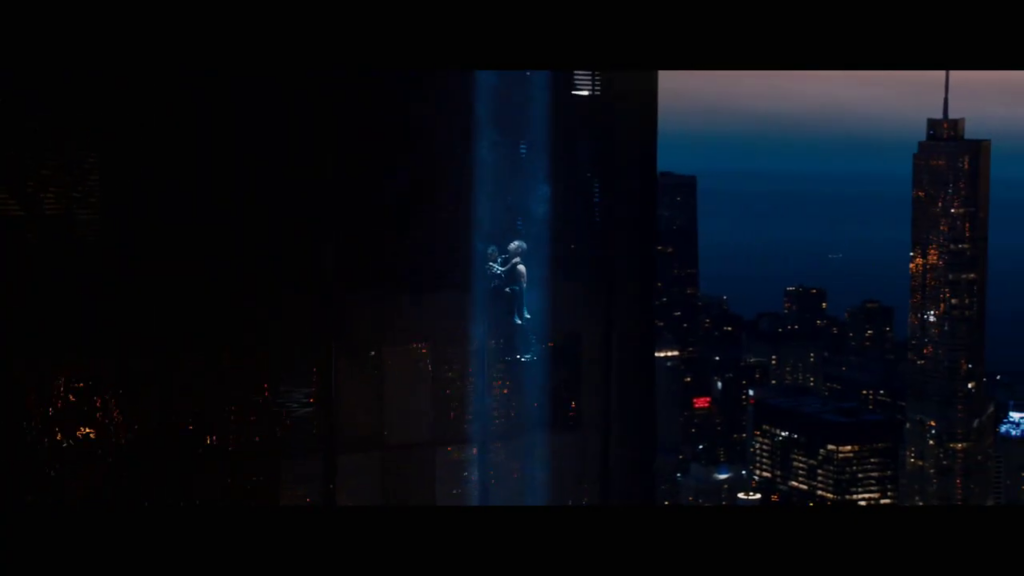
Jupiter Ascending (2015)
Film review #651
Director: Lana Wachowski, Lily Wachowski
SYNOPSIS: Jupiter leads an ordinary life when she is caught up in an interplanetary struggle when it turns out she is the genetic reincarnation of the head of the most powerful business in the galaxy, and inheritor to a vast fortune. Caught up in a battle for the inheritance of her supposed genetic double, Jupiter has to figure out who she can trust as she is kidnapped across the galaxy by those who want her inheritance for themselves.
THOUGHTS/ANALYSIS: Jupiter Ascending is a 2016 sci-film. An ordinary woman discovers that she is the genetic reincarnation of the head of the Galaxy’s most powerful empire, and is caught up in the struggle for control of it between three siblings. A simple enough story in theory, but let us set the tone here: it is bad, and borderline incomprehensible. Obviously the film is trying to capture the feeling of the main character being introduced to a galaxy which she has not known anything about, but there has to be some way for the viewer to be able to follow what’s happening too. What we get is just Jupiter being passed back and forth across different planets, spaceships and the like, with no real sense of place or establishing where in outer space we are at any given time. The film is constantly interrupted by characters having to explain things to Jupiter, meaning we have to suffer through it as well. The film obviously wants to create an expansive universe, but it really sweats the small details to the point that information overload sets in, and the explanation never applies to anything from that point on. The whole scene with the bees recognising Jupiter in the sense that bees “recognise royalty” was so unbelievably stupid I don’t know where to start: they could have just written any other way to show her status, but to do it with bees raises far too many questions: do bees not sting human monarchs as well then? It doesn’t matter, because it is never referenced again after it’s unceremonious one-time use. The film has some expansive and detailed CG effects, and the action scenes have a certain pacing, but always resolve themselves the same way: with Cain saving Jupiter at the very last second. By the fifth or sixth time it happens it’s so predictable the whole fanfare around it is just wasted. Also, Cain has these anti-gravity boots that he constantly uses in his action scenes to fly about, but apparently no one else in the galaxy has access to these things as they are left running about on the ground after him? The Wachowskis bring in their conceptual exploration of transhumanism and discovering who you are as they typically do, but there’s no depth to it or interesting exploration; it’s just more explaining minutiae that drags the film down into getting stuck on little details that don’t matter.
The film is supposed to have this overarching love story between Jupiter (Mila Kunis) and Cain (Channing Tatum), and how Jupiter has never been in love because her Mother taught her never to get close to anyone or something. There’s the germ of a narrative here, but it’s hampered by another of the film’s huge problems: the characters never becomes proper characters. Everybody in the film just feels like they can’t settle into their roles, and as such you only recognise the actors just being themselves. These are all fairly competent actors, so they know what they’re doing, they just aren’t given anything tangible or unique to work with. As such, any chemistry or character development is severely limited. By far the most obscene performance is Eddie Redmayne as the villain Balem Abrasax: he constantly talks in this low whisper which makes him impossible to take seriously. His role is so over-acted that it’s distracting from anything his character does. In fact, his character disappears for nearly all the film, so he’s not really all that important. The rest of the cast are Sean Bean being Sean Bean (although his character doesn’t actually die) and others that barely make a scratch in the film. The crew of the spaceship Aegis have a supporting role, I’m just not sure what it is, due to the constant moving around different planets and locations across space mentioned, it’s hard to keep track of just what is going on and what their motivations are.
The film does have some good CG effects and the otherworldly locations are rendered with good detail and a graspable scale. Unfortunately, that is the only positive I can really take from this mess of a film. Jupiter Ascending is a mess of poorly structured plot, ill-defined characters, and bemusing performances that nowhere near fulfil the concepts and narrative themes they are attempting to develop. Every action scene playing out essentially the same even drains the film of any entertainment value. I simply cannot recommend this film in any way.
-
#629 – Flight World War II (2015)

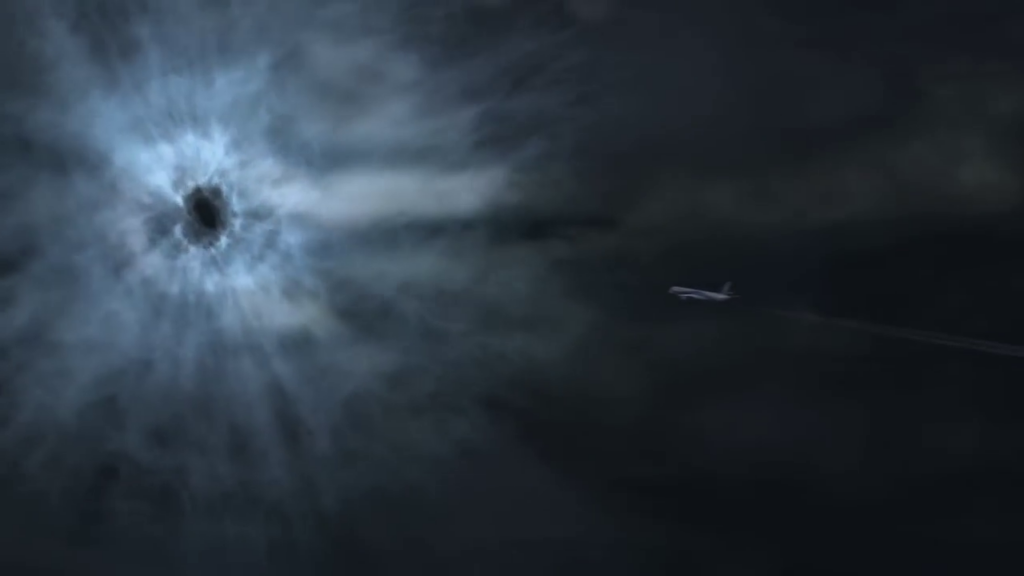
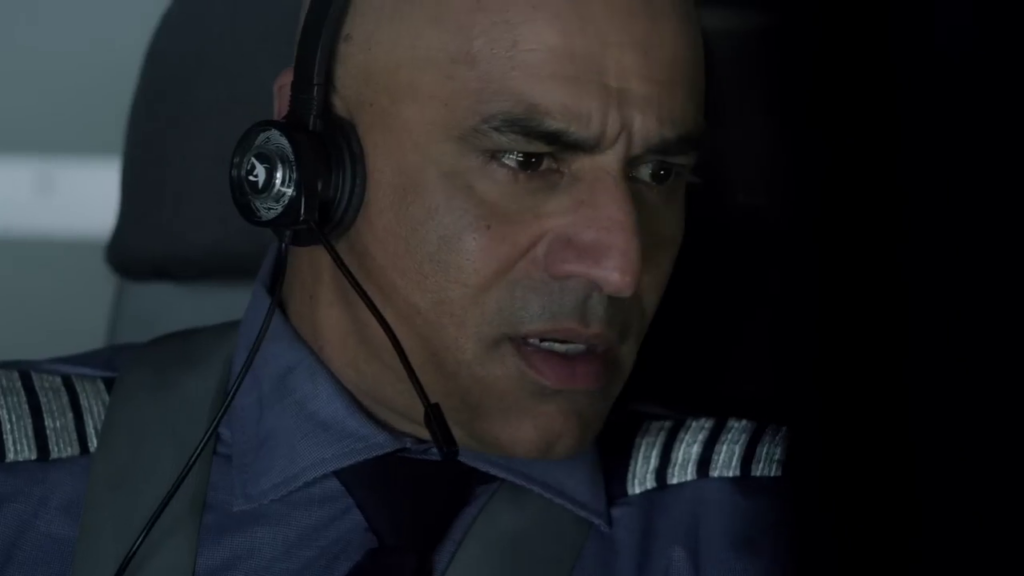
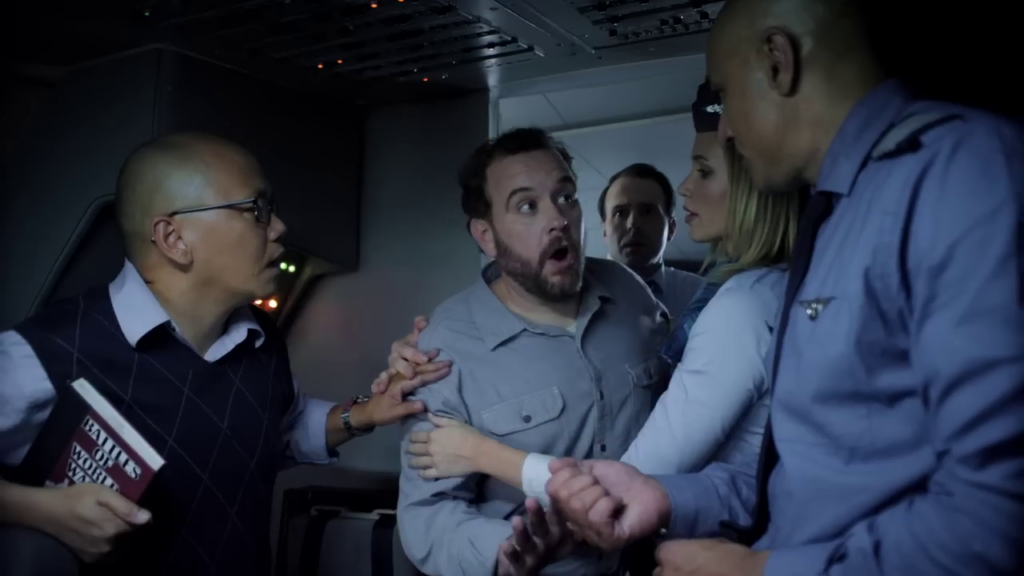
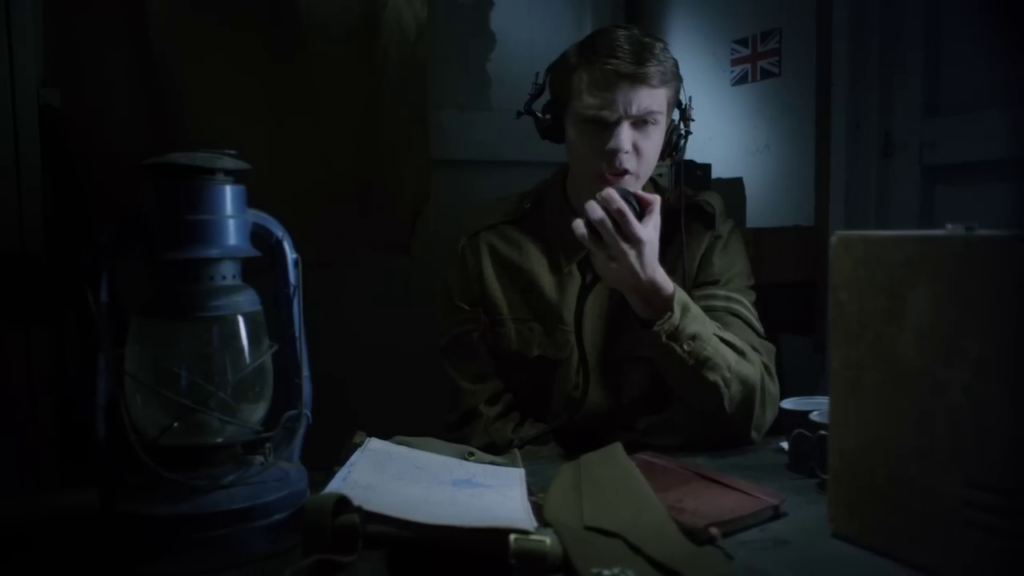
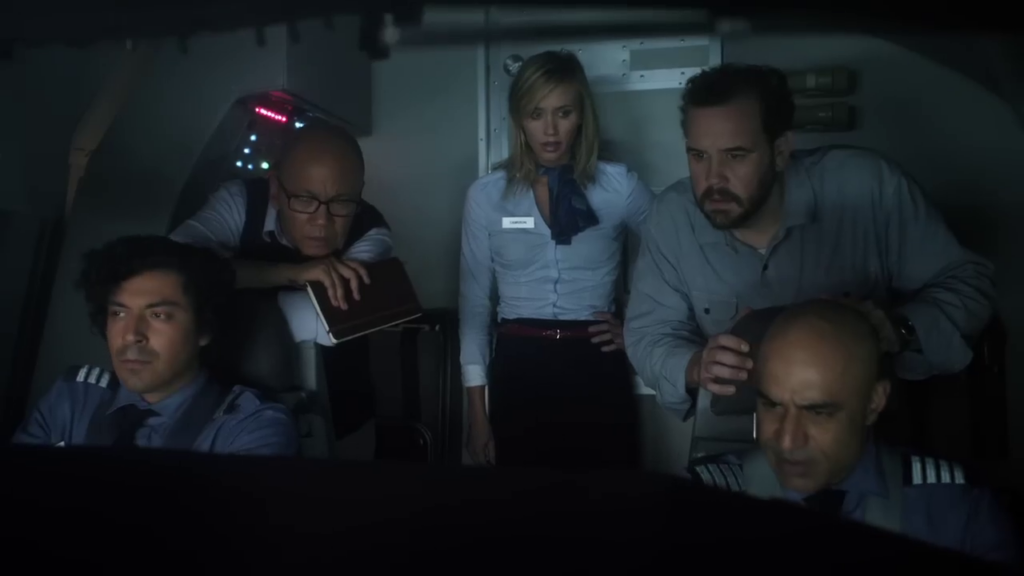

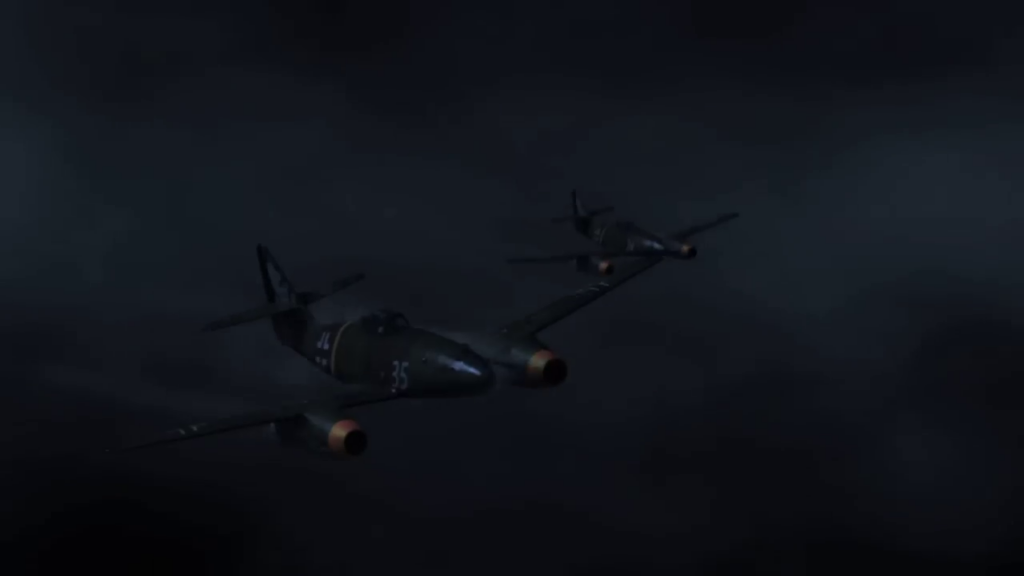
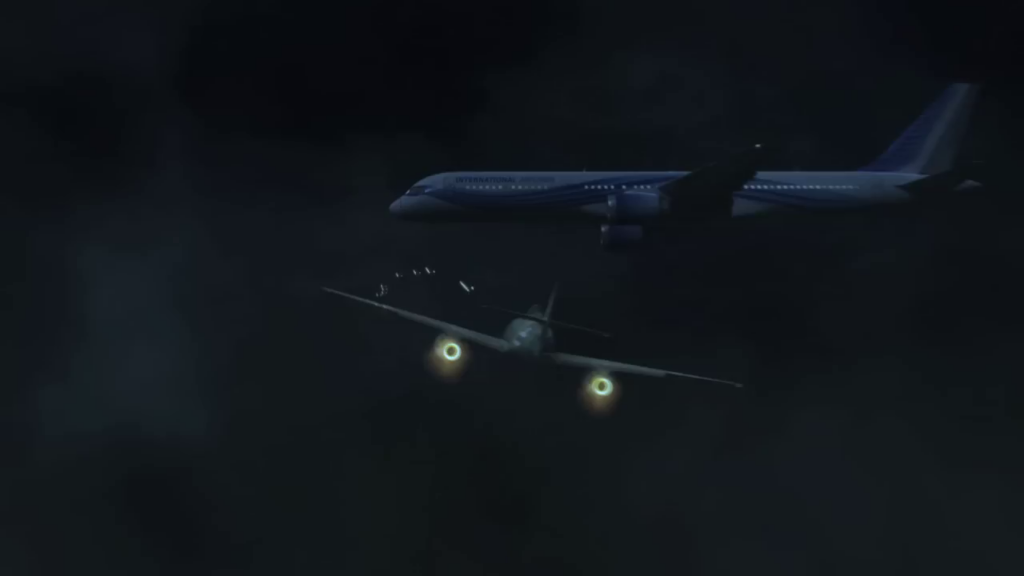
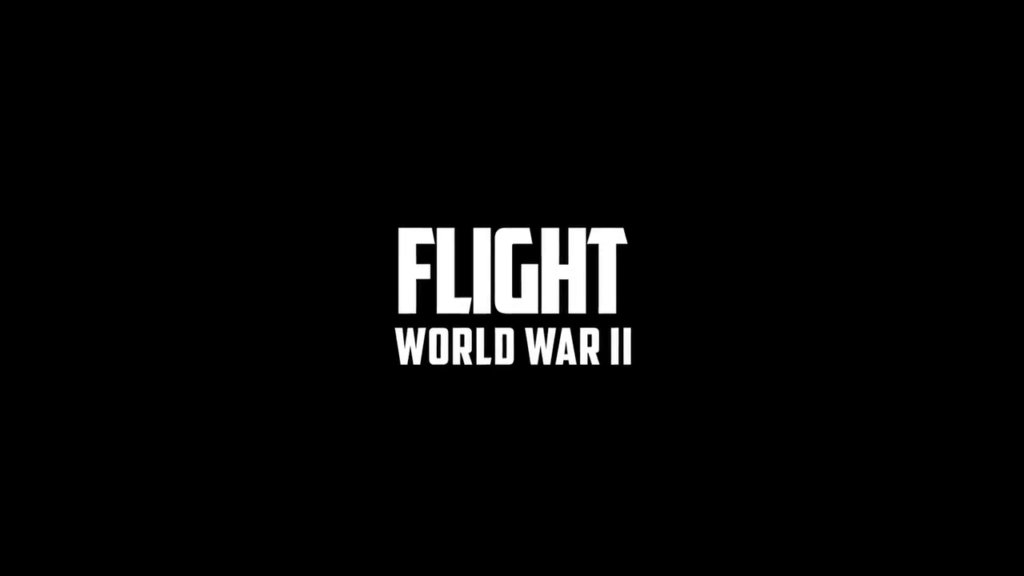
Flight World War II (2015)
Film review #629
Director: Emile Edwin Smith
SYNOPSIS: A commercial flight to London encounters a strange storm that it flies through, and ends up over the skies of France in 1940 during World War II. With their only contact with the ground being a young British officer, the crew must find a way to keep it safe from enemy fighters, and make its way home…
THOUGHTS/ANALYSIS: Flight World War II is a 2015 sci-fi disaster film. A routine commercial flight to London travels through a strange storm in the air, and emerges on the other side over the skies of France in 1940 during the second world war. The crew and passengers have to deal with the situation, aided only by a young British soldier on the ground named Nigel. The concept I suppose is interesting, but it is extremely similar at its core to The Philadelphia Experiment from 1984, but in reverse, as two aircraft personnel were sent forward in time from the second world war to 1984. First thing to notice is that this film is produced by The Asylum; notorious makers of low budget, often derivative films that cash in on recently released films with barely disguised rip-offs that are just distinct enough to avoid legal action. So if you know The Asylum’s work, you’ll know to expect very little. The film explores some of the implications of time travel, but it creates way too much of a mess with the concept, and raises far too many plot holes that are ignored.
With nearly all of the film set in the plane, there’s no need to splurge on fancy sets, which is ideal for The Asylum. You could certainly make a film like this feel tense and claustrophobic, and get into the different perspectives of the passengers, but that doesn’t really happen. Everyone is a flat, cut-out character with no real personality or uniqueness. We are not given a background on anyone, so there’s nothing to really to develop. The fact that there just so happens to be two academic experts on world war two on a plane that just so happens to travel back to world war two is somehow even less believable than the whole time travel thing.
Probably the most annoying thing about this film is it’s complete lack of relation to reality: there’s things like the German planes you see not being invented until after the film that you can overlook, because that’s very specific knowledge you won’t pick up unless you’re super into world war two history. The main problem is with when the fighters shoot the passenger plane and is riddled with bullet holes: a passenger plane would go down pretty quickly after even a few hits. There’s also points where the windows are blown open and the cabin is de-pressurised, but in the next scene everyone is sitting in their seats fine: there would be no plane left if there was a massive hole in it. The fact that someone is blown out of a door would probably have altered time in some way if someone found their body with their mobile phone or whatever they had on them? There’s just so many things that are just distracting. The “twist” at the end is fairly predictable, and is infuriating, because they just faintly acknowledge it. It’s one of those instances where you want to see more from the twist, rather than just leaving it open for interpretation.
Overall, Flight World War II offers very little in every way: the concept is underdeveloped, the characters are one-dimensional, and the logic of what happens with the pane are at complete odds with reality. It’s not really a “so bad it’s good” film either, as there’s nothing humourous either; just a drab wander through the motions.
-
#620 – Thirst (2015)
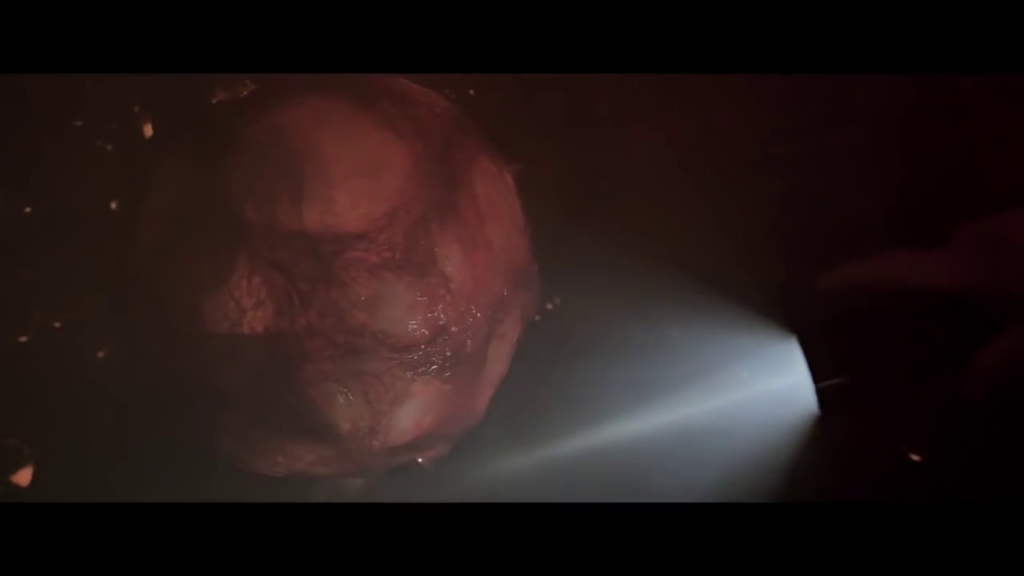
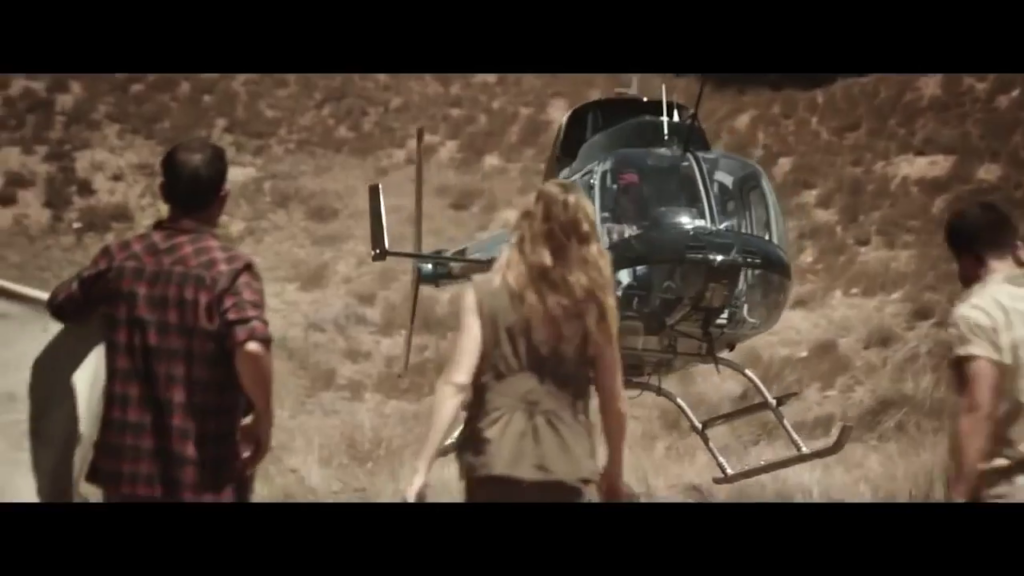
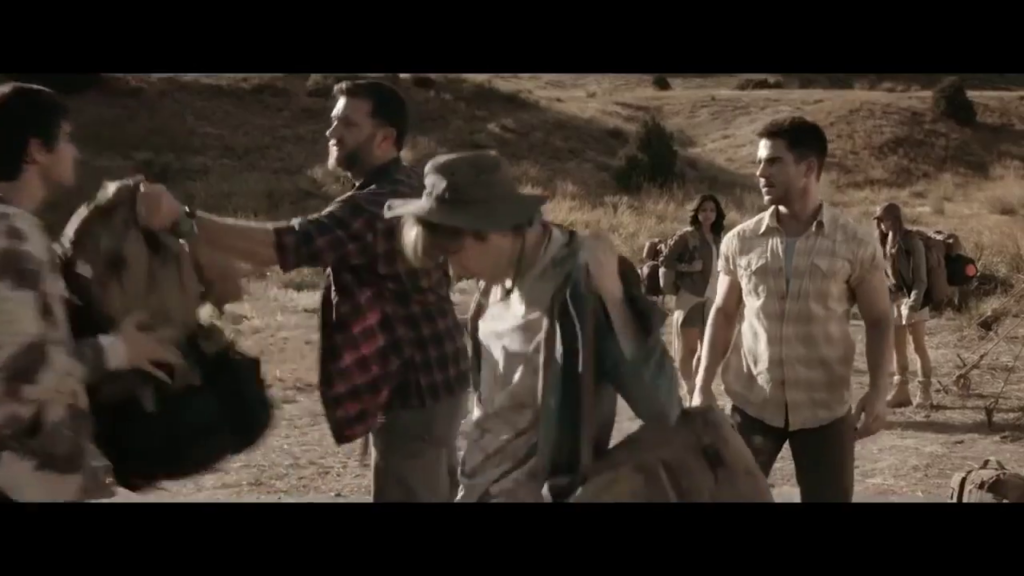
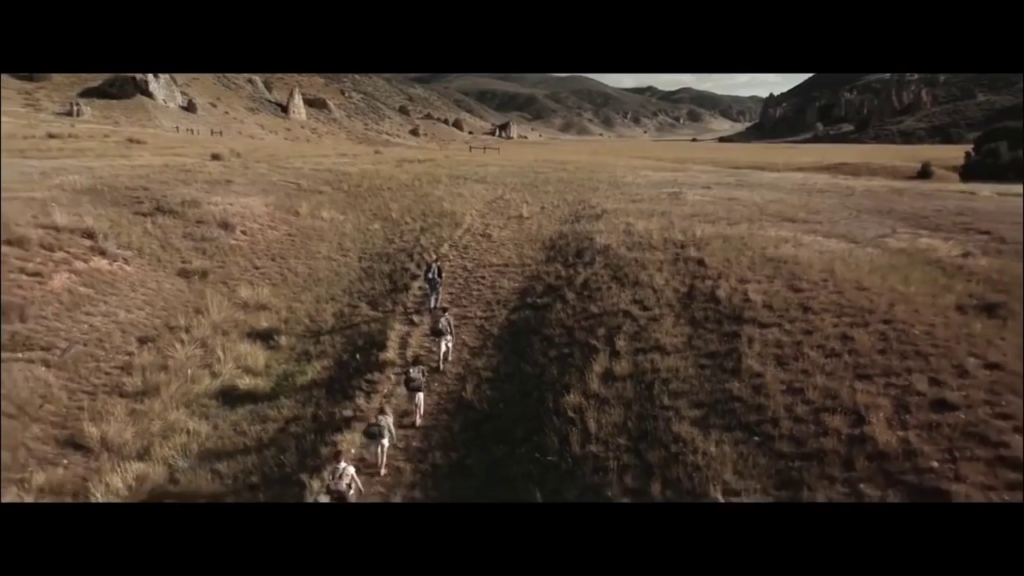
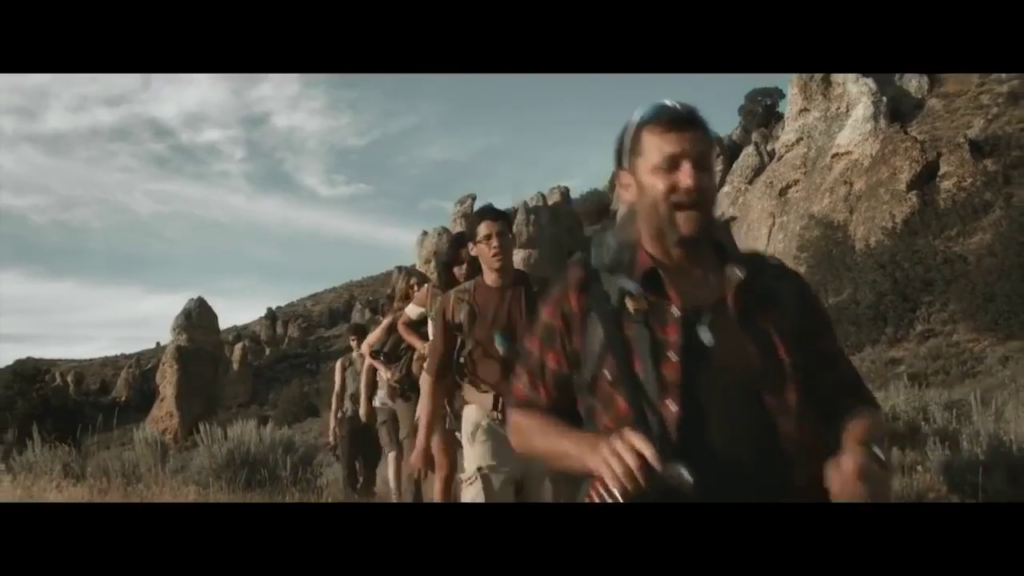
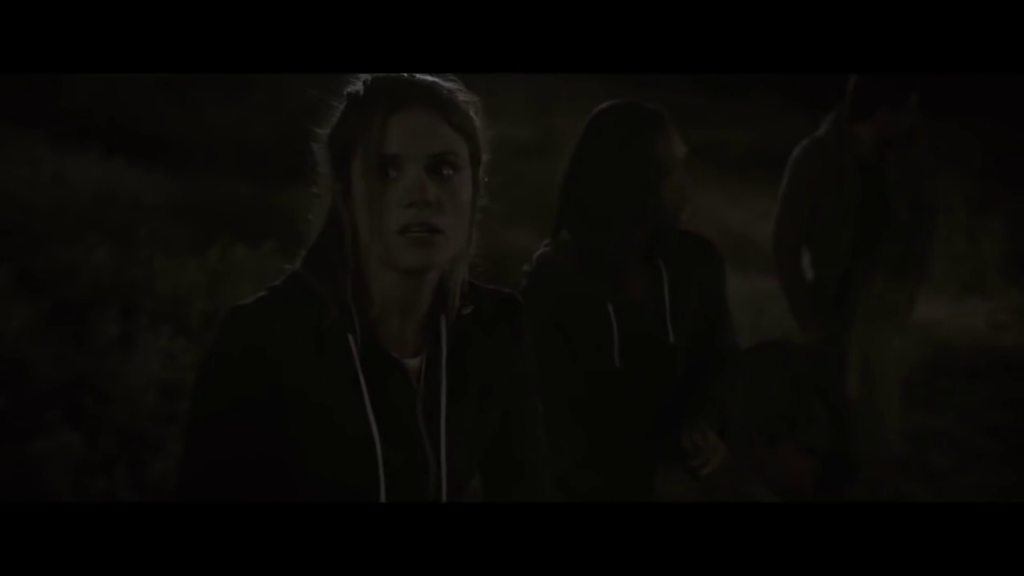
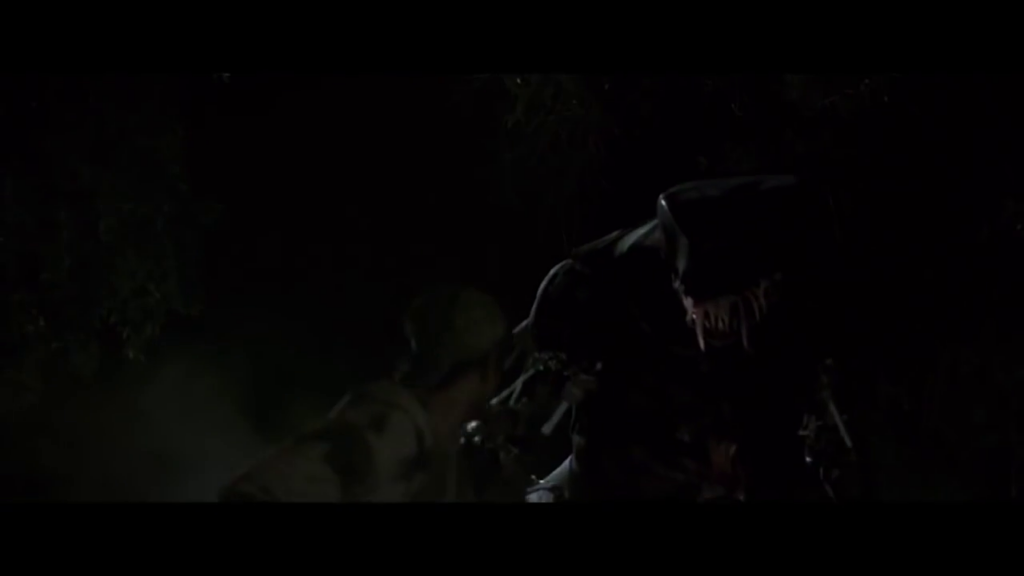
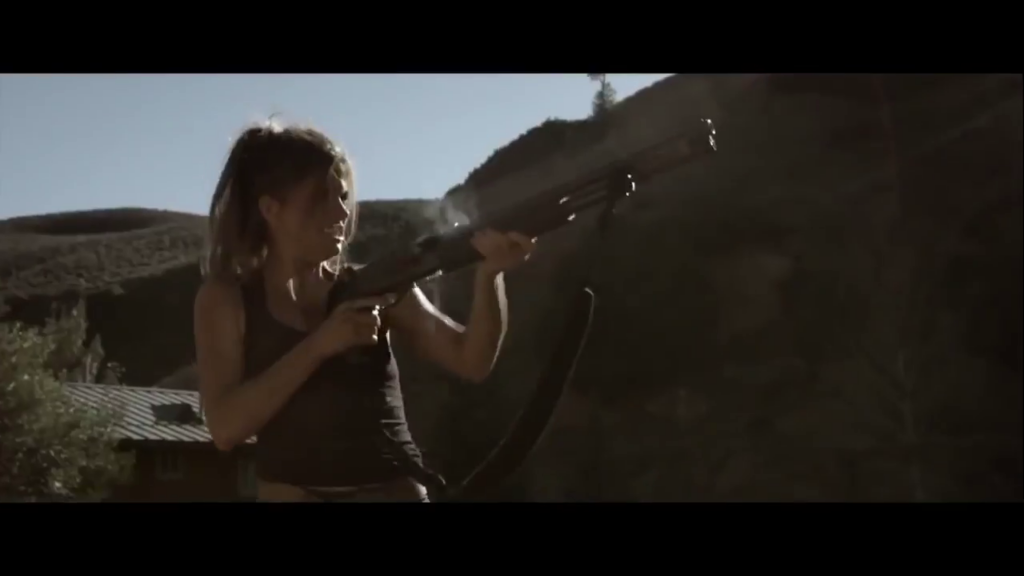
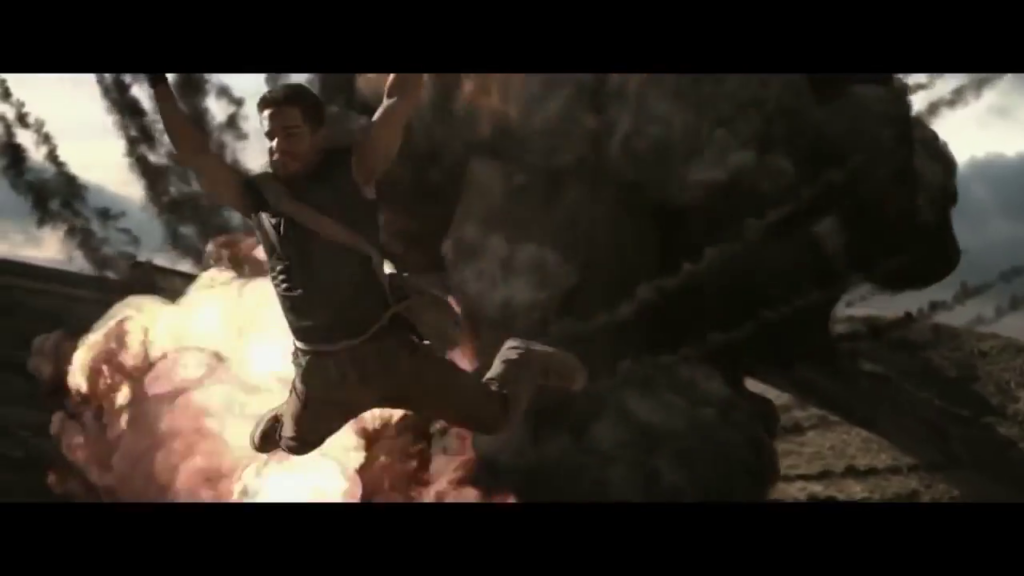
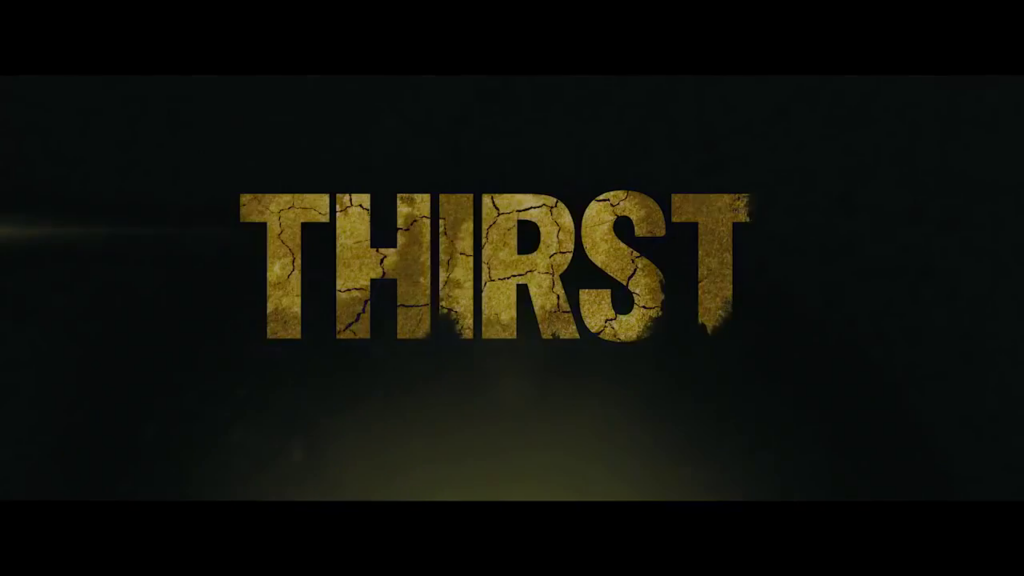
Thirst (2015)
Film review #620
Director: Greg Kiefer
SYNOPSIS: A group of young delinquents are sent into the wilderness to a couple who aim to toughen them up and make them responsible members of society by hiking through the wilderness. Unfortunately, lying in wait is an alien creature that aims to suck them dry, and with no means to contact the outside world, the group must try to survive before they are all hunted down…
THOUGHTS/ANALYSIS: Thirst is a 2015 sci-fi horror film. Opening up like every other horror film, we see an nameless character get murdered after discovering some sort of alien blob…thing. Cut to the film proper, a group of delinquent youths have been sent by their parents or whomever to the middle of the Californian wilderness (i.e. nowhere) to be subjected to a ten-day hike by a couple who run a business of toughening up such youths to make them productive members of society: that’s the story anyway, but it seems very dubious and highly illegal. Anyway, the group eventually stumbles upon an alien that wants to suck people dry (?), and they must find a way to survive and escape. It is, in short, every other creature/monster-based horror movie, with no real surprises or novelties to make it interesting. The plot points are predictable, and a lot of the film is just a lot of shouting and running around the middle of nowhere without being able to generate any real sense of atmosphere or terror. It’s not even hilariously bad, it’s just boring and nonsensical.
The characters are the usual bunch of horror unlikeable stereotypes: they don’t really develop as characters, and their deaths aren’t really impactful. One character in particular does virtually nothing and survives near to the end of the film, and I wonder if someone just forgot to do anything with them. Killing off the two “adult” characters could have been an interesting twist that forced the younger ones to grow up, but it doesn’t really happen. The alien is obviously a Xenomorph rip-off with no attempt to be original. For some reason, it’s also half-metal, which makes no sense. We’re given no sense of what this alien is or how it works, which isn’t too much of a deal insofar as we don’t need to know it’s motivations, but it would be nice to give the alien some substance to make it stand out.
Obviously made on a budget, the film just consists of the cast wandering about in the middle of nowhere as mentioned, and the special effects are unconvincing at best. No jump scares, no atmosphere, no tension, and no originality, Thirst won’t quench the need for a good horror.
-
#586 – Goosebumps (2015)

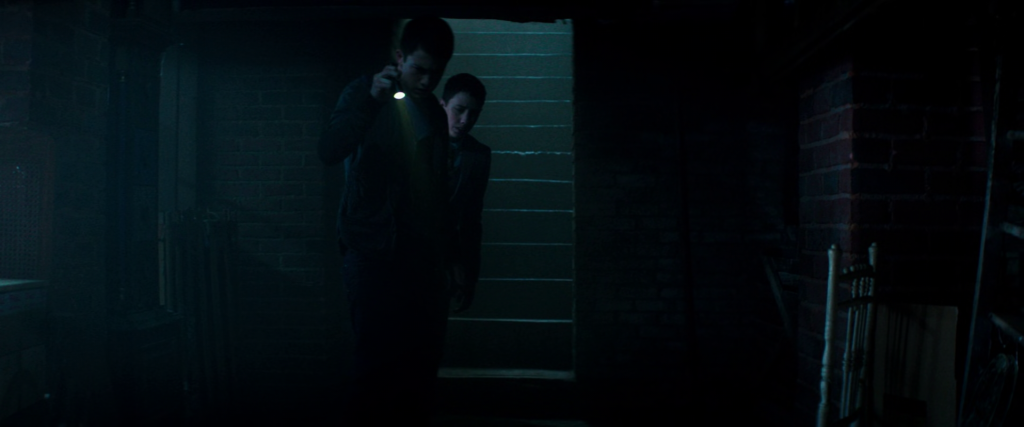
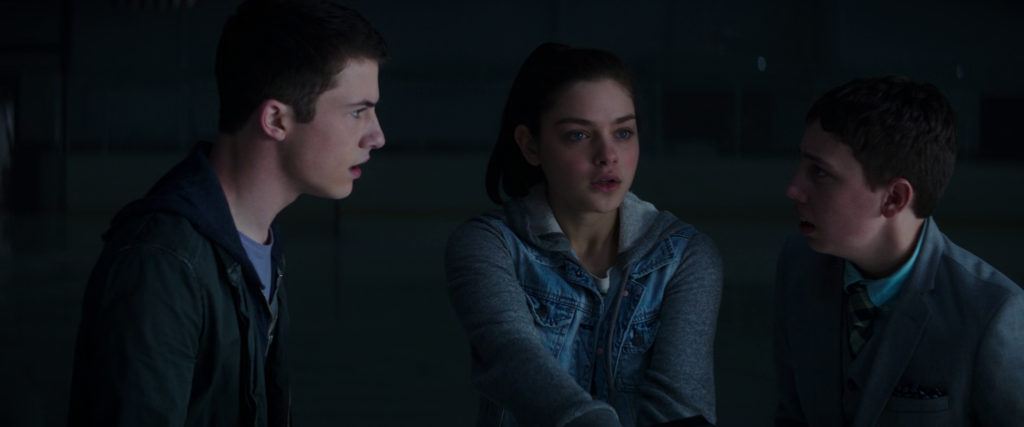
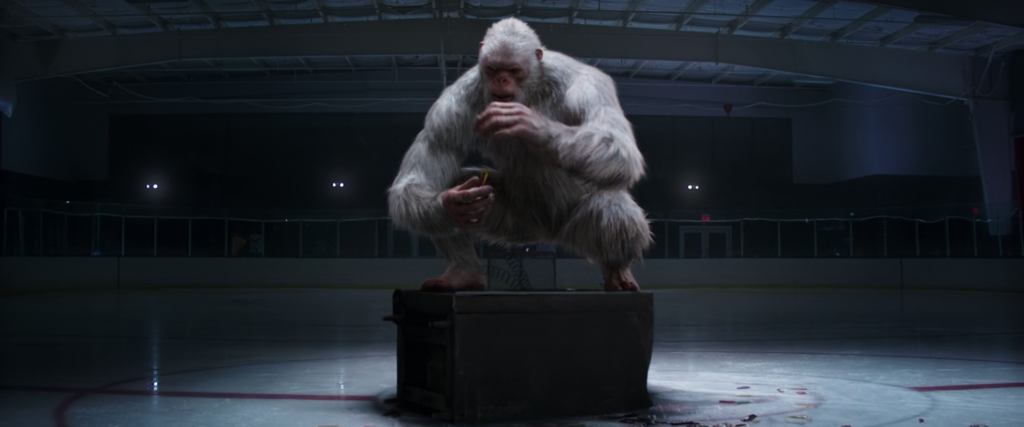
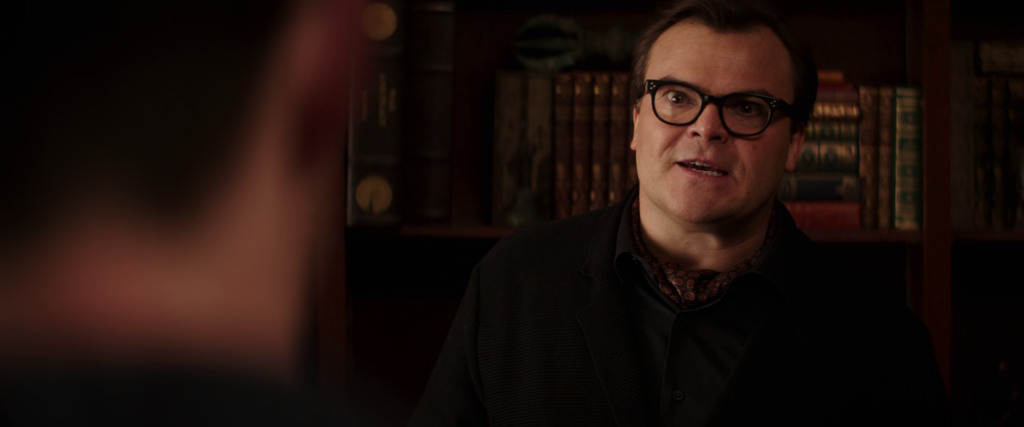
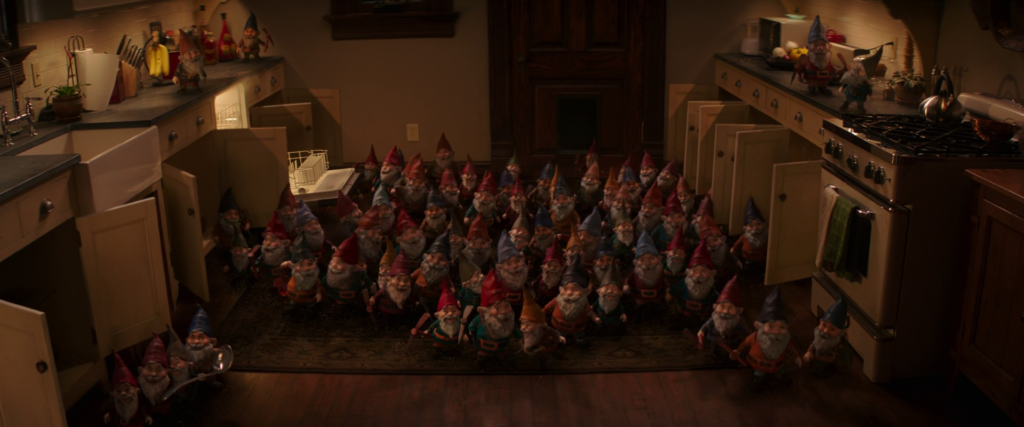
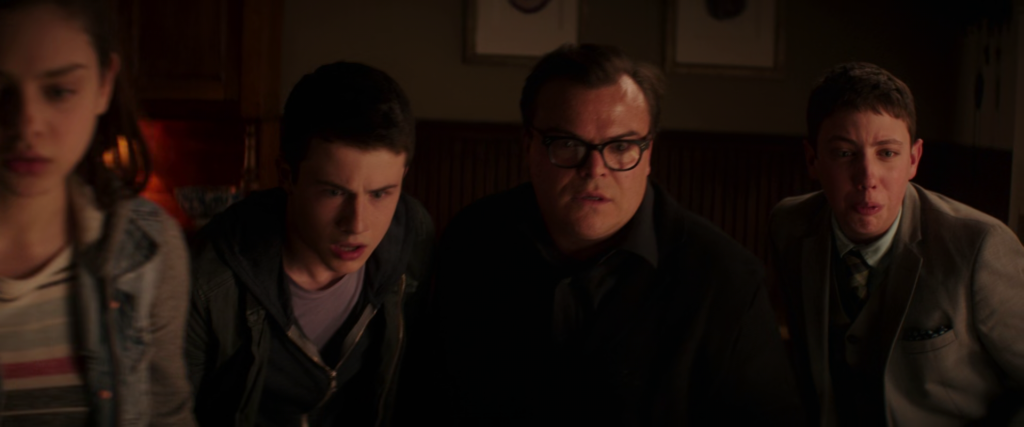
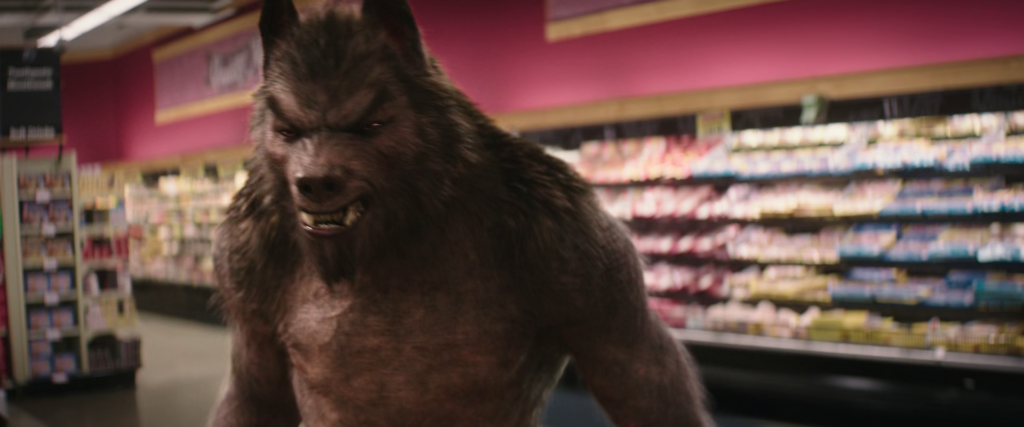
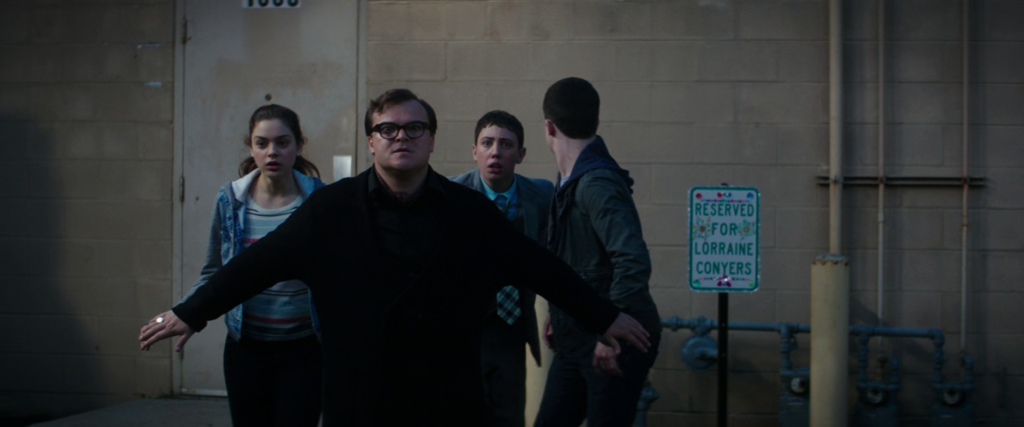
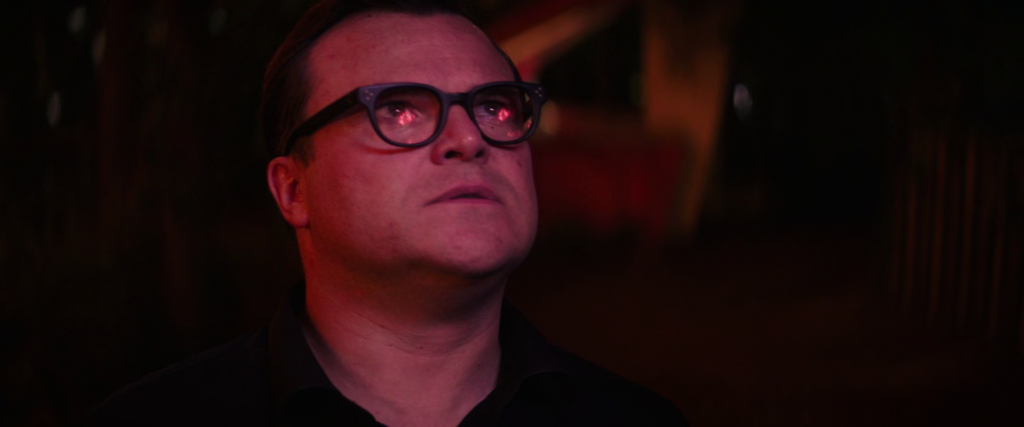
Goosebumps (2015)
Film review #586
Director: Rob Letterman
SYNOPSIS: Zach Cooper moves with his Mother to the town of Madison, Delaware, where he learns he has a strange new neighbour. Things take a twist when Zach learns that his new neighbour is none other than R.L. Stine, author of the Goosebumps series of books, and the monsters from his books have accidentally been brought to life…
THOUGHTS/ANALYSIS: Goosebumps is a 2015 film based on the series of horror books by R.L. Stine. The film starts up in a very typical way, introducing teenager Zach Cooper and his Mother moving to a new town and having to get used to a new school and all of that: a situation you’ve seen in films plenty of times. Fortunately, the film doesn’t linger too long on it, and it’s somewhat necessary to provide the grounds for the film’s twist. Zach learns that his odd neighbour is none other than R.L. Stine, the author of the Goosebumps series, and the creations in his horror stories are very much real; as he finds out when the monsters are released from their books to terrorise the town. The meta-twist of the film, making R.L. Stine (played by Jack Black) a character and referencing the actual books is implemented well, and provides a good way of incorporating the different characters from the books. If you’re a fan of the series, you’ll appreciate the different monsters that appear, but even if you’re not familiar with them, it doesn’t impact the experience in any way.
What the film does well is – when it kicks off with the monsters being unleashed – that it keeps up an unrelenting pace and energy as it moves along without any real lulls. The different parts of the film aren’t really anything unique, but it never slows down enough to make it boring. Part of this is due to Jack Black’s portrayal of R.L. Stine, as he brings his usual energy to the role and to basically steal every scene he is in. If you’re not a fan of Jack Black, maybe you’ll have an issue with the film, but otherwise you can certainly enjoy the ride. The rest of the cast is fairly uninteresting and don’t really develop beyond their typical roles, but again it’s not that much of an issue since they aren’t really the ones driving the plot.
Overall, Goosebumps overcomes a predictable setup with a self-referential twist that works well, with a constant energy and entertainment that doesn’t give you a chance to get bored. Like the series itself, it is horror for kids, so there’s no real scares or frights to be had, but again, it focuses more on the action and self-referential humour that make the film work in it’s own right. Not perfect, but entertaining enough, particularly if you’re a fan of the franchise.
-
#555 – 400 Days (2015)

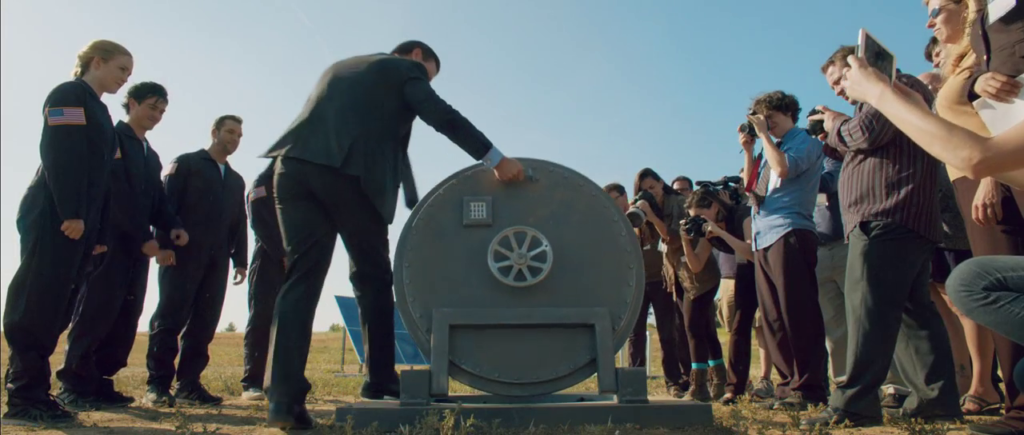
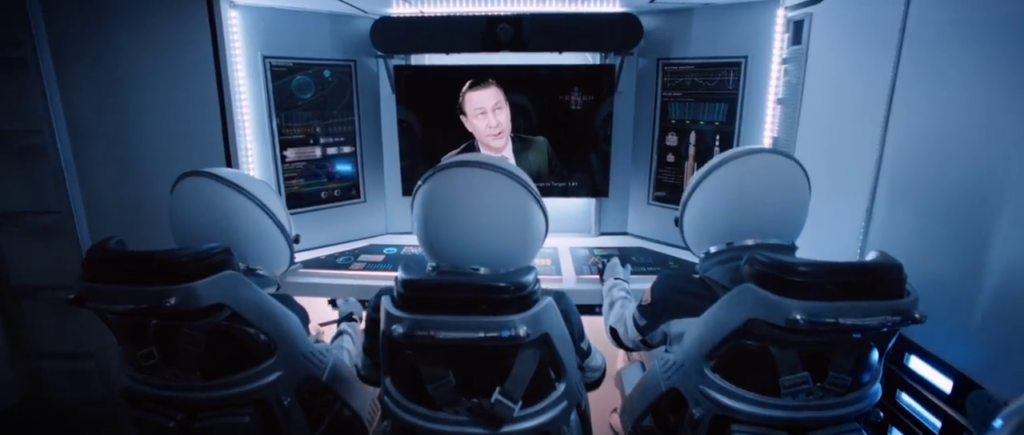
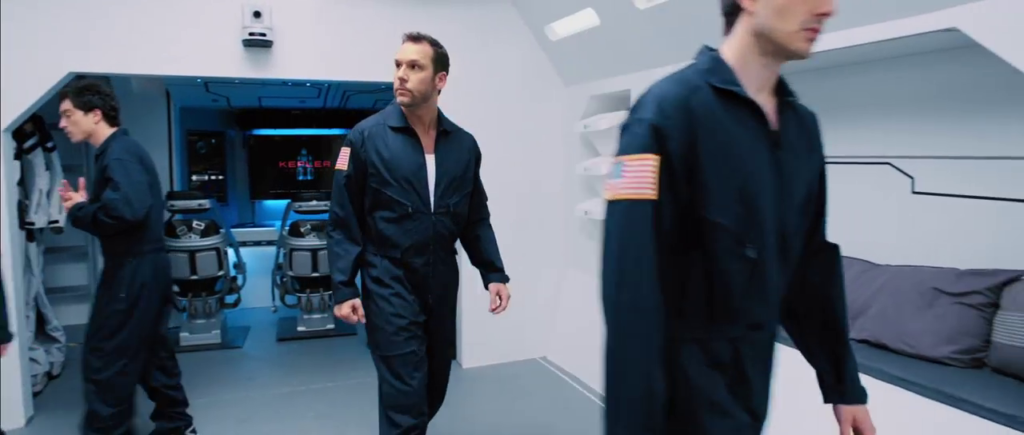
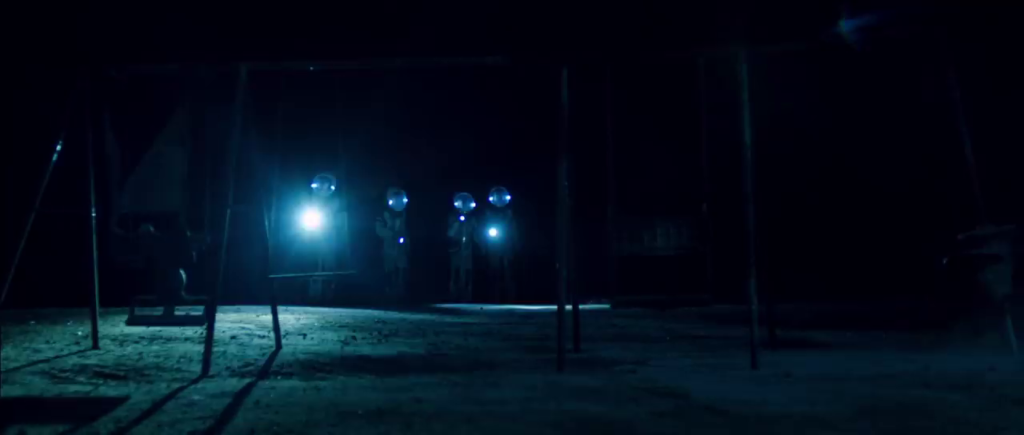
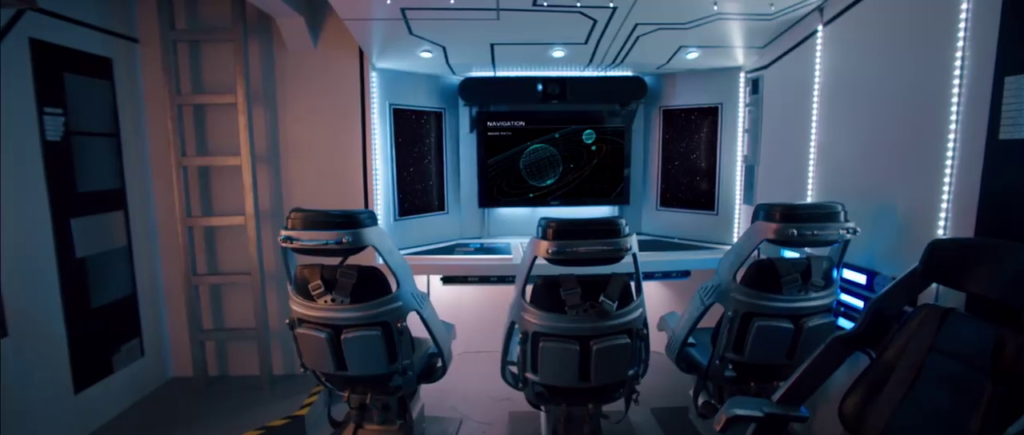
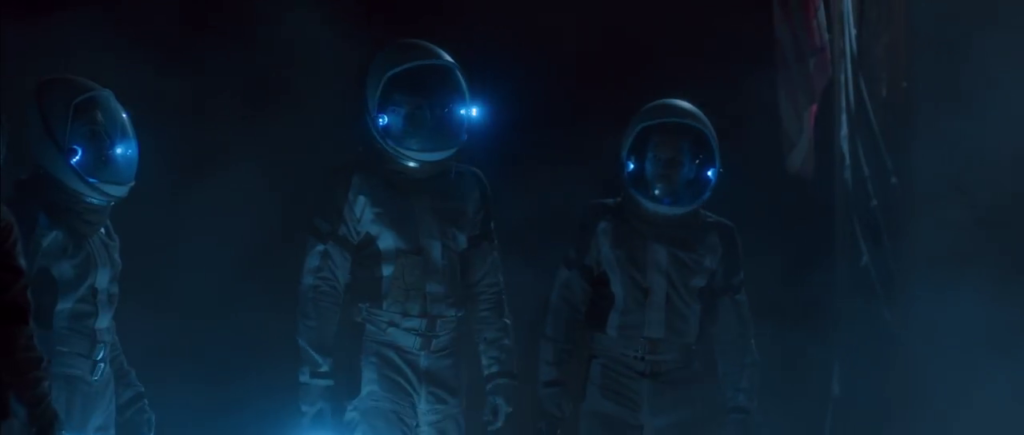
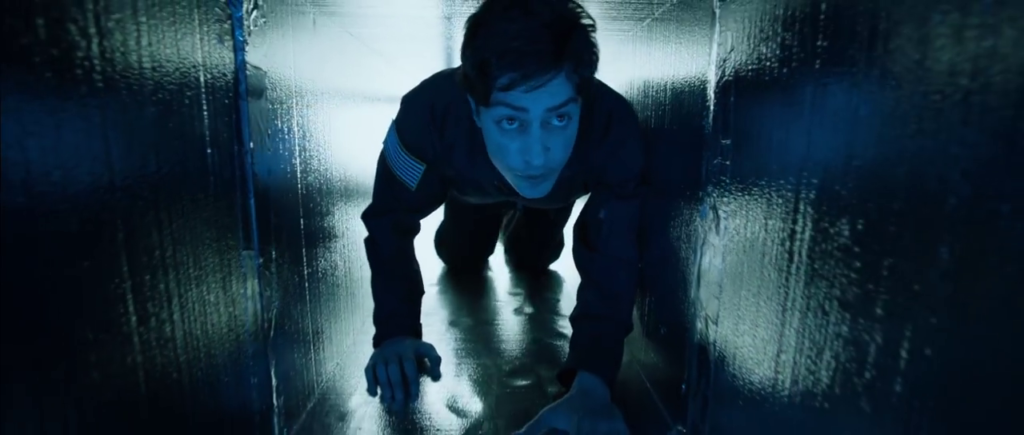
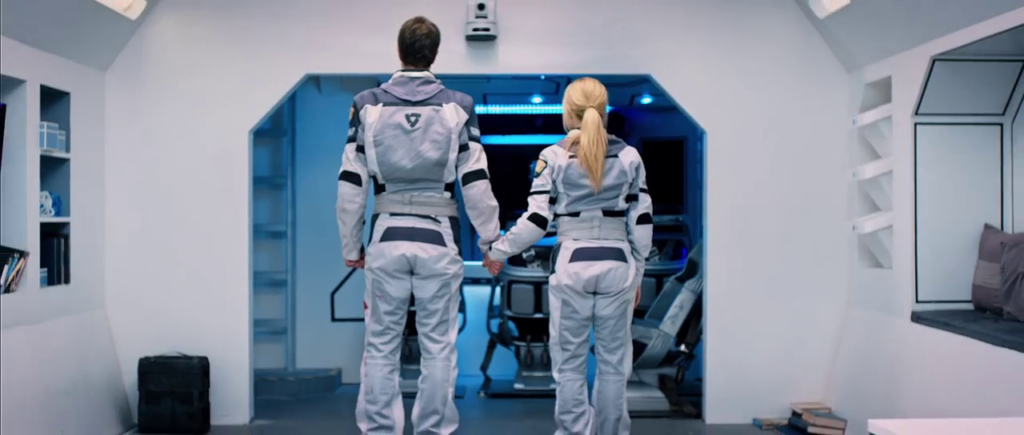
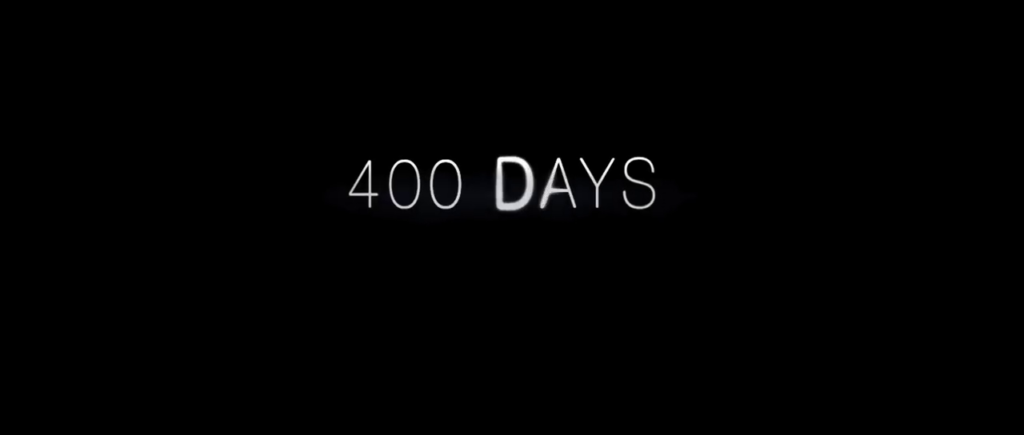
400 Days (2015)
Film review #555
Director: Matt Osterman
SYNOPSIS: Four astronauts are chosen to undertake a psychological experiment to survive 400 days on a simulated space journey to another planet, undertaken in an underground bunker. As the crew loses contact with the outside world and the long journey takes its toll, the crew emerge into a changed world, and the distinction between what is a simulation and what isn’t begins to blur…
THOUGHTS/ANALYSIS: 400 Days is a 2016 science-fiction film. The plot revolves around four astronauts who are chosen to undertake a simulated mission to another planet for 400 days in an underground bunker. As the mission progresses, they are expected to deal with the psychological challenges and unexpected issues that arise. However, as the mission nears completion, the crew start to feel like something is amiss, and leave the bunker into a completely different world, and the question of what is a simulation and what isn’t becomes increasingly prevalent. The film is a suspense/thriller film, but there is nothing really suspenseful or thrilling about any of it. Firstly, we hardly see any of the 400 day journey, apart from the beginning and a scene about halfway through, so we don’t really get a sense in the change of the character’s psychological state and how they are faring. Even when the characters emerge from the bunker into a strange new world, there’s not much more that’s added to the suspense and mystery. Any actual suspense is completely ruined by any jumpscares being telegraphed a mile off, with the pre-silence before a sting being so completely obvious you’ll know what is coming. Coupled with the cliché dialogue, there’s little to immerse you in the environment that the film creates.
The first thing you’ll notice about the characters is that none of them seem to be the type of people you would expect to be astronauts: their dialogue, on top of being cliché as mentioned, just seems uninterested and almost naïve: they definitely don’t seem to be the type of people you would lock together in a confined space for four hundred days. The acting isn’t bad. but the actors really aren’t given much material to work with. There’s a typical romance subplot that doesn’t really add anything, and the conflict that is generated between the crewmembers is ineffectual, and dissipates fairly quickly.
The film almost completely different during the second act: the crew emerge from the bunker after their 400 days to find that apparently the world has been plunged into darkness because the moon exploded and all the debris fell to earth causing some ecological apocalypse or something. Wandering around in a now b-movie plot, the crew stumble upon a town of survivors who all seem a bit mad, but the film just decides to constantly cast doubts on whether what they are experiencing is real, or just another part of the simulation, or it’s all in the astronauts imagination, which maybe was caused by the injections the medic was giving them under the guise of immunisation boosters? The film just throws more and more questions and points that contradict one another, but does it in such a haphazard way that you can’t really form a coherent opinion on what you think is happening. The whole idea that the moon exploded for some reason and somehow all the moon dust fell to Earth and destroyed everything is pretty farfetched, but a lot of the film feels unbelievable anyway, from the corny dialogue to the seemingly inept characters.
The worst part of the film is most certainly the ending: you probably know what is going to happen, as the crew are congratulated on surviving the simulation apparently, and just before they leave the bunker, the film snaps to black and the credits roll, leaving the question of what actually happened up for interpretation. However, this only works in films if what is up to interpretation is constructed properly, so you can somewhat imagine what has happened based on what you have experienced. This film throws out so much smoke and contradictions that it is almost impossible to imagine what happens next. The different possibilities have to be believable or derived from what the film gives you, but there’s just none of that here. The issue is definitely not the low budget either, it’s definitely a case of overwriting an idea and running away with it. Overall, 400 days is a bit of a mess, and undermines itself as a thriller, and falls short of being credible science-fiction. If you want a space-based psychological film, you can watch Solaris, and if you want a sense of mystery that gives you space to interpret the message, you can watch Inception.
-
#425 – Evil Bong 420 (2015)
Evil Bong 420 (2015)
Film review #425
Director: Charles Band
SYNOPSIS: Having escaped the bong world, Rabbit sets up a bowling alley to fulfil his dreams. While he is welcoming his guests for the opening night, Ebee, the evil bong herself, along with the Gingerdead man, who is also trapped in the bong world, arrange to travel to the bowling alley and return Rabbit back to the bong world…
THOUGHTS/ANALYSIS: Evil Bong 420 is a 2015 comedy horror film and the fourth film in the Evil Bong film series. Following the last film, where Rabbit was trapped in the bong world, where the evil bong creates illusions to keep people their forever, he decides to follow his dream and opens a topless bowling alley where people can smoke weed. That…is basically the plot of the film. With a run-time of only fifty-three minutes, it’s barely a film at all, and even then it still seems to have trouble filling the screen with content. Most of the first half of the film is just dialogue, with Rabbit welcoming the various guests into the bowling alley. None of these characters are particularly interesting, and only serve as a stereotype to make very specific jokes. You would think that these characters are being introduced only to be killed off later as this is a horror movie after all, but no; none them are killed and only one gets an injury. The whole setup just seems pointless.
Apart from all the new characters that are introduced in the film for no reason, there are a few returning characters, such as Rabbit, who seems to have become the main character of the series now, and Larnell, who is stuck in a love triangle. Of course, Ebee the evil bong herself returns, but spends most of the movie in cut-aways to the bong world, where she engages in trash talk with the “gingerdead man.“ I imagine these scenes are hilarious if you’re stoned watching a bong and an evil gingerbread man arguing with each other, but otherwise they’re pretty uninspiring. The gingerdead man himself is a character from another film series (unsurprisingly called the gingerdead man) made by the same production company, and previously crossed over with the evil bong franchise in the Evil Bong vs Gingerdead Man film of 2013. The character himself is perverted, dirty and a nasty bit of work, but never gets round to killing anyone. The focus seems to be much more on the gingerdead man than the evil bong, which is distracting, and gives the film a different feel than its predecessors. All of the other characters apart from Larnell and Rabbit are however missing from this film, and that makes it feel pretty empty.
The Evil Bong series has definitely not been a high production affair, and Evil Bong 420 definitely continues that. The action is entirely limited to the bowling alley, which is in keeping with the minimal sets of the other films (although they had at least two or three). Someone at least knows how to frame a shot and edit a scene in this film, as even though the dialogue goes on for far too long, at least the camera work breaks up the monotony a little. The CG is pretty bad, but that’s expected. There’s definitely a change in tone with this film, as it doesn’t really make much attempt at a story, and instead just focuses more on being a lot more explicit and crude, mostly in the form of much more nudity and sex jokes. It overall feels a bit tasteless and devoid of any substance (not that there was much to begin with in this film series). On the one hand, I suppose it is appealing more to people who are watching this film while high, as they will have no real concern for the story, but the film still is mostly a lot of dialogue and set-up for things which don’t happen. There’s perhaps one or two funny jokes in the first part of the film, but the flat acting shaves off some of it’s impact. Overall, I think it’s fair to say that Evil Bong 420 is the low-point of the franchise (so far), and is fairly mindless in it’s story, set-up and characters, with an altogether tasteless and crude sense of humour.
-
#351 – 10000 Years Later (2015)
10000 Years Later (2015)
Film review #351
Director: Li Yi
SYNOPSIS: Ten thousand years after advanced civilisation was wiped out and the world reverted to a pre-technological state, Joma and Yalayam of the Ballad tribe are travelling the western region to tell the tale of the fall of civilisation. Unfortunately, Wugreb, who once tried to steal the ancient powers to rule the world, has returned, and Joma alongside her new friends must find a way to stop Wu before he releases the ancient civilisation’s power back onto the world, all controlled by him…
THOUGHTS/ANALYSIS: 10000 Years Later is a 2015 Chinese animated film. It is a mix of post-apocalypse, science-fiction and fantasy elements, as it is set (as the title suggests) 10000 years after civilisation suffered a catastrophe that sealed away all of its advanced technology and left the world in a pre-technological state. The world is now separated into various tribes, which include anthropomorphic animals and various mutations brought about by the catastrophe. Joma and Yalayam are from the Ballad tribe, who wander through the western region telling the story of the fall of the ancient civilisation to the other tribes. They also tell the story of Wugreb, who once tried to steal the ancient technology that is sealed away and rule the world with it, warning that anyone who tries to do the same will be met with the same fate. However, Wugreb (or Devil Wu, as he is also known) has returned, and is attempting to once again take the technology of the ancient civilisation for his own. The story relies a lot on this extensive world-building, and how the world has changed since the fall of civilisation as we know it. Sometimes it is easy to follow, but at some points it gets overly complicated, and for a film that is just over ninety minutes long, the explanations and exposition it gives do seem a little excessive. Nevertheless, it is an interesting world that is built, and the variety of locations and characters give it a unique sense of life and vibrancy. The people refer to famous people throughout history (Einstein, Beethoven etc.) as the “Gods” of the old world, and it is an interesting way to interpret history’s most pivotal figures. There are these odd scenes which play out quite nicely, but they are mostly used to explain the state of the world, and when the film returns to the main characters, they seem much less interesting.
Joma goes to see an oracle, who tells her that she is the only one who can stop Wu, and she must go to Kuger, the tomb where Wu was imprisoned, to stop him. Along the way Joma is joined by a cast of characters from different tribes who all inject their own personalities into the film. The film very much has a Lord of the Rings feel to it, with the group travelling to their destination to stop the oncoming evil, and all the perils that they encounter. But again, there’s a lot of backstory and exposition that disrupts the flow of the film, and you really have to focus and pay attention to follow what is going on. The characters on the whole, though, are distinct enough to be able to follow, but for all the explaining and exposition, don’t really do much, so it’s hard to get to know them as characters. At once point the film deals with the meeting of the Gods which I can’t really make sense of; and whether they are actual Gods or not is anyone’s guess. Joma as the main character is also a bit bland and uninteresting: even though she is marked as the chosen one, she doesn’t really have any defining traits or character defining moments that make her stand out, and she is often very passive to the events of the film. The ending of the film also does little to elucidate the significance of Joma’s role, and makes little sense. The designs of some of the villains, with their multiple faces or limbs and other bizarre features are both scary and creative, and the somewhat imperfect animation actually helps exemplify their grotesqueness.
This film is entirely CG animated, and for the most part it creates a world that has immense scale, colourful diversity and interesting locales. We see ruined versions of recognisable cities such as New York and Sydney, which add some interesting shots and perspective on the story. There are some moments when the animation gets a bit clunky, and facial expressions and movements sometimes look a little stifled or flat, but otherwise it doesn’t distract too much from the film. It’s not cutting edge in terms of its graphics, but it is passable for a kids film. Apart from the Lord of the Rings influence mentioned above, there is also a certain amount of ‘inspiration’ taken from the Marvel Avengers films. When I say inspiration, that often becomes blatant copying, such as the five stones that Joma carries containing seeds from across the western region clearly being based on the “infinity stones” in the Marvel universe, and there is a shot which copies exactly the iconic shot from the 2012 Avengers film of all the superheroes together for the first time on the streets of New York City. All this copying does cheapen the film’s overall image, but being a Chinese film, where these films would not have seen much of a release, the audience probably won’t even know they are being copied. The editing of the film also feels quite choppy in parts, such as when the big final battle begins, the enemy soldiers slowly emerge, and it instantly cuts to the whole army appearing, which really interrupts the flow of the film (though it probably saves on the animation costs).
One more significant aspect of the film is the amount of gore and violence throughout. I can’t really tell what the ideal age range is for this film: it seems mostly kid-oriented, but even from the opening, there are people being sliced up, bloody battles with people being cut in half and stabbed, and so on. I’m not sure what the standards are for Chinese cinema in terms of violence in children’s films, but it definitely wouldn’t be a child-friendly film in the west. Overall, 10000 Years Later creates an interesting and colourful world with a rich back-story, but the focus of the story and its main characters are often lost in the overly complex world and narrative that can be difficult to follow. The character designs are creative and unique, but again the personalities of the main characters are dull by comparison, and often get lost in the grand scale of the world. The large-scale battles are impressive and entertaining, but it is obvious that they are copying from the Marvel films and Lord of the Rings, which obviously do them much better, and make the film feel like a cheap imitation…which, let’s be honest, is exactly what it is. There are some emotional moments (there’s a scene right at the start which pulls you in instantly…you’ll know it if you see it), and the gratuitous use of gore and violence really gives weight to the fighting scenes, but ultimately there is no real pay-off to investing in this world, and it offers very little that is unique.
